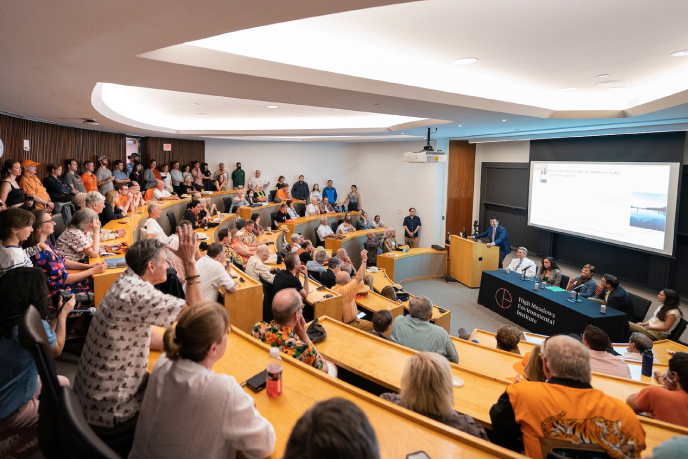Meet Our Past Interns - 2017
- Alternative Energy
-
Aifuwa, Eseiwi ’19
Chemical and Biological Engineering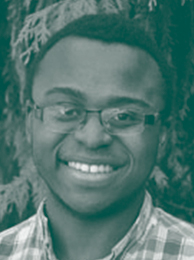 PROJECT
PROJECTPromoting Algae Growith with Photoreactors
ORGANIZATION / LOCATIONDepartment of Chemical and Biological Engineering, Princeton University
MENTOR(S)José Avalos, Assistant Professor of Chemical and Biological Engineering and the Andlinger Center for Energy and the Environment
SEE PRESENTATIONI worked on speeding up the process of algae growth in order to promote — and make feasible — further studies in the possible use of algae to produce biofuels. I built a set of photoreactors in order to determine the wavelengths of light that best promote algae photosynthesis. I took daily optical densities in order to track algae growth in the reactors. We found that red light is more effective than green light, but we had issues with controlling contamination. We also worked on thermoelastic substances to possibly reflect the light inside of the reactors. We also considered different agar formulas and discovered that washed — a repeated process of cleaning that takes roughly a week — bacto agar is the most effective type of agar for algae to grow in. Now that we have some results, I am continuing work in the the lab in order to understand why these experiments occurred the way they did.
-
Cohen, Robert ’19
Mechanical and Aerospace Engineering
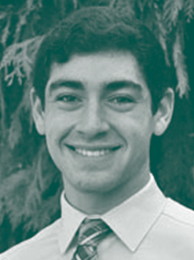 PROJECT
PROJECTLithium Vapor Box Diverter
ORGANIZATION / LOCATIONPrinceton Plasma Physics Laboratory
MENTOR(S)Robert Goldston, Professor of Astrophysical Sciences
SEE PRESENTATIONI performed research on nuclear-fusion technologies at the Princeton Plasma Physics Laboratory. Specifically, I worked one-on-one with a fifth-year graduate student whose research focused on extracting the energy produced during fusion reactions. The main challenge we addressed is that approximately one-third of the escaping energy is tightly confined to strong electromagnetic field lines, which results in a very powerful, narrow energy beam that poses a serious threat to the structural integrity and lifetime of the reaction vessel. Each day on the job was different than the last. I spent a lot of time performing powertransfer calculations, joint-integrity tests, and logging thermocouple data. I even learned how to weld and constructed features of the preliminary test-stand experiment! The experiences I gained reinforced my desire to pursue a career in the field of sustainable energy.
-
Dasgupta, Anushka ’19
Chemical and Biological Engineering
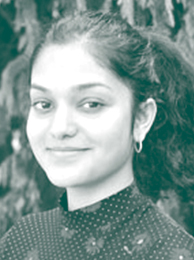 PROJECT
PROJECTCharacterization of a New Electrolyte for Mg-ion Batteries
ORGANIZATION / LOCATIONDepartment of Mechanical and Aerospace Engineering, Princeton University
MENTOR(S)Craig Arnold, Professor of Mechanical and Aerospace Engineering
SEE PRESENTATIONRechargeable magnesium-ion (Mg-ion) batteries are a promising alternative to lithium-ion (Li-ion) batteries, especially because they lack the dendrite formation that has led to safety issues in Li-ion technology. Key to the performance of a Mg-ion battery is its electrolyte, which enables the redox processes within the battery to occur smoothly and reversibly. For my internship, I characterized a nonaqueous alkoxide electrolyte previously developed in the Arnold battery lab. I learned to use equipment in the lab to fabricate, cycle and perform electrochemical tests on coin cells. I also had the opportunity to use the state-of-the-art facilities in the Andlinger Center for Energy and the Environment at Princeton to analyze samples. Working independently at all stages – from fabrication to analysis – was a challenging and rewarding experience that gave me valuable insight into the research process.
-
Gaitan, Gabriel ’19
Physics
 PROJECT
PROJECTClean Small Fusion Reactors
ORGANIZATION / LOCATIONPrinceton Plasma Physics Laboratory
MENTOR(S)Samuel Cohen, Director of the Program in Plasma Science and Technology, Princeton Plasma Physics Laboratory
SEE PRESENTATIONI worked on Samuel Cohen’s team to develop a highly efficient push-pull, class-E electrical amplifier to power an antenna. The antenna is used to heat plasma in the Princeton Field Reversed Configuration (PFRC) plasma reactor. Due to its small size and power range of 1 to 10 megawatts, a working PFRC reactor would be suitable as a clean power-producing reactor for terrestrial electricity generation and in NASA space missions, such as a human mission to Mars or in deflecting asteroids. The reactor uses aneutronic fusion, which greatly reduces neutron damage to the walls and reduces radioactivity by more than a factor of 1,000 compared to other nuclear-power sources. During this project, I learned how to simulate the amplifier, include effects of non-ideal components, use the lab equipment to build the circuit and test it, and, most importantly, model and find solutions to problems not present in the initial simulations. I learned a lot about using both simulations and experiments to both guide my project and to improve my models and understanding of theoretical and practical aspects. I also benefited from the guidance of people inside and outside of our group and I got a great taste of the life of a graduate student.
-
Grah, Olivia ’19
Economics
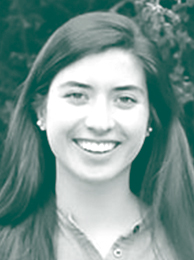 PROJECT
PROJECTClean Energy Intern
ORGANIZATION / LOCATIONEnvironmental Defense Fund, New York City
MENTOR(S)Rory Christian, Director of New York Clean Energy, Environmental Defense Fund
I primarily worked on three projects for the clean-energy team at the Environmental Defense Fund (EDF) in New York City during the summer. I focused on energy issues affecting lowto- moderate income residents in New York City. I also examined the New York Public Service Commission’s initiative to improve the accuracy with which it values solar power injected into the electric grid. Finally, I studied the feasibility and potential scope of electric-vehicle use in New York City. I conducted internet research and produced a number of research reports and summaries for EDF employees. The summer provided me with insight into the operation of a large environmental nonprofit, with a special emphasis on the interface between nonprofits and partners in private and government sectors. Because of the internship, I have an increased interest in energy issues, and I am interested in exploring the intersection of energy and business.
-
Khan, Hassaan ’20
Mechanical and Aerospace Engineering
 PROJECT
PROJECTClean Small Fusion Reactors
ORGANIZATION / LOCATIONPrinceton Plasma Physics Laboratory
MENTOR(S)Samuel Cohen, Director of the Program in Plasma Science and Technology, Princeton Plasma Physics Laboratory
I learned a lot about plasma physics during the summer. The project I intended to do was on the Princeton Field Reversed Configuration (PFRC) and involved using fusion for space propulsion. However, the necessary equipment was not yet installed. Consequently, I worked in another lab utilizing the probes that I would eventually use on the PFRC research project. Unfortunately, the probe was never installed on the PFRC. Still, I learned a great deal about Langmuir probes and their function and data analysis. The primary activities I took part in were oscilloscope use and data analysis, including Fourier-transform analysis. I learned a ton about the oscilloscope and how to analyze the data it records. This internship helped me realize I am more of a practical person who likes to build and design components instead of just analyzing the data they record. On another note, I would recommend only rising juniors and seniors to take on this internship as the physics can be a bit intense.
-
Khurram, Hamna ’20
Computer Science
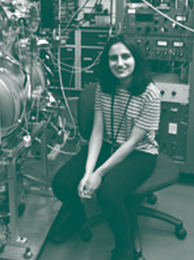 PROJECT
PROJECTSurface Properties of Tungsten for Plasma Interactions
ORGANIZATION / LOCATIONPrinceton Plasma Physics Laboratory
MENTOR(S)Bruce Koel, Professor of Chemical and Biological Engineering
I worked at the Princeton Plasma Physics Lab (PPPL) and learned about surface science and plasma-materials interactions as related to applications in nuclear fusion. My project was to better understand the surface properties of the rare metal tungsten. Tungsten is a material that could be used to construct the inside parts of a nuclear reactor that needs to withstand interactions with hydrogen plasma. I was trained to use a scanning electron microscope (SEM) – a machine that can provide information about the surfaces of materials – and prepared samples of tungsten with a sample-polishing machine used for microscopy. Through my summer internship, I gained a fuller understanding of what it means to work long-term in a research-lab setting. Based on my experiences, I now have a better idea of what type of career I might want to pursue.
-
Mahmood, Hamza ’20
Computer Science
 PROJECT
PROJECTFinancial, Electrical and Thermal Modeling of High-Rate Recharging Vehicles
ORGANIZATION / LOCATIONLightening Energy, Dover, New Jersey
MENTOR(S)Eric Materniak, Program Manager and Engineer, Lightening Energy
I worked at Lightening Energy, a startup company that seeks to expand its high-rate recharging solutions to the commercial market. I had the opportunity to perform market research, develop business plans and presentations, and implement the beginning stages of a realworld algorithm. Much of the summer was dedicated to optimizing business models for industrial and aerospace applications. Thus, I learned about new financial principles and assisted with financial modeling of prospective business paths. In this manner, I was able to hone my research and analytical skills. Additionally, I was continuously exposed to businessmeeting protocols as interns met and discussed ideas with the CEO and product engineer manager. It was thrilling to gain insight into how a small startup functions. This internship has influenced me to take business classes, learn more about algorithms, and actively participate in the very important field of sustainability. Ultimately, I am happy the internship delivered more than what I expected.
-
Pi, Selina ’19
Operations Research and Financial Engineering
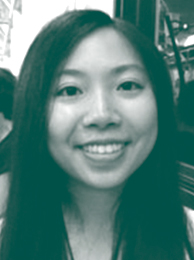 PROJECT
PROJECTFinancial, Electrical and Thermal Modeling of High-Rate Recharging Vehicles
ORGANIZATION / LOCATIONLightening Energy, Dover, New Jersey
MENTOR(S)Eric Materniak, Program Manager and Engineer, Lightening Energy
SEE PRESENTATIONAt Lightening Energy, a company focused on energy storage and recharging technology, I worked to develop cost-revenue models for different business scenarios involving high-rate recharging vehicles. My role also included producing and reviewing financial documents and presentations, which were sent to investors to market the company’s proprietary technology. My work allowed me to apply the economic theory I learned in class to the analysis of a real-world market and business. I needed to consider not only material costs and margins but also operating costs, local and national regulations, competition, and industry trends to obtain a well-founded estimate for potential demand and an idea of the risk involved. Through my work and Lightening Energy’s mentorship, I immersed myself in startup culture, learning about business opportunities in alternative energy and the amount of collaborative effort needed to bring a new business idea into action. The internship confirmed my interest in financial modeling, business valuation and market research in an environmentally sustainable and economically viable field. I’ve been inspired to further my academic studies in energy as a valuable resource and to seek a career leading the production of tangible, efficient technology.
-
Sidhu, Harjot ’19
Electrical Engineering
 PROJECT
PROJECTFinancial, Electrical, and Thermal Modeling for High-Rate Recharging Vehicles
ORGANIZATION / LOCATIONLightening Energy, Dover, New Jersey
MENTOR(S)Eric Materniak, Program Manager and Engineer, Lightening Energy
SEE PRESENTATIONThe primary goal of my project was to effectively use a new battery technology for industrial applications. I worked on researching a battery-management system for six battery cells and studying the appropriate component costs. I then consolidated this information into a “pitchdeck” to present to potential investors. I also researched an automation and communications design for an industrial application, creating a preliminary design for a network that connected the industrial vehicles. For my last project, I built a batterymanagement circuit for two battery cells. Through this amazing experience, I furthered my knowledge of electrical-engineering principles – specifically the workings of a battery – and developed skills in finance as I worked on financial models and analyses. This internship experience influenced my future academic study by creating an interest in the renewableenergy sector, an area that I plan on studying more. Working at Lightening Energy was an enriching experience that has allowed me to not only further my own skills, but also work in the exciting environment of a startup company.
-
Sue, Christina ’19
Chemical and Biological Engineering
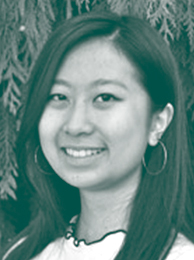 PROJECT
PROJECTProtecting China’s Cities and Nature Through Energy Management and WIldlife Litigation
ORGANIZATION / LOCATIONNatural Resources Defense Council, China
MENTOR(S)Alvin Lin, Climate and Energy Policy Director, China Program, Natural Resources Defense Council
I interned at the Natural Resources Defense Council’s (NRDC) China branch in Beijing, where I worked on the climate and energy and on the wildlife-protection teams. This summer afforded me flexibility to bounce between projects, most notably introducing a cap on oil consumption and setting up national sentencing guidelines for wildlife crimes. The climate and energy team played a pivotal role in advising on China’s coal-consumption cap, so being able to calculate emissions, meet with advocates and experts, and predict environmental impacts with recommendations for the oil cap felt especially pertinent. On the wildlife team, I analyzed past wildlife-crime rulings in the American court system to provide a foundational understanding and highlight the necessity of standardization in these types of cases. I also developed presentations that aggregated information on environmental indicators as part of a government project to transform mines into national parks. Beijing is quickly moving towards environmental sensitivity and sustainability in tandem with China’s rapid economic growth. This summer strengthened my determination to pursue environmental work and it piqued my interest in Chinese global diplomacy.
-
Wang, Bertha ’18
Mechanical and Aerospace Engineering
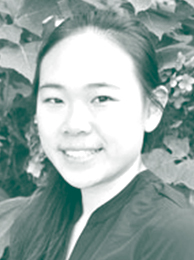 PROJECT
PROJECTFinancial, Electrical and Thermal Modeling of High-Rate Recharging Vehicles
ORGANIZATION / LOCATIONLightening Energy, Dover, New Jersey
MENTOR(S)Eric Materniak, Program Manager and Engineer, Lightening Energy
SEE PRESENTATIONI interned at Lightening Energy researching mechanical and structural components for electric vehicles and their cost estimations. I got to learn about existing technologies for electric motors and transmissions, and analyzed their torque and power capabilities. This research was used for an electric-vehicle design and was incorporated into a report and pitchdeck that the company can present to investors. Through this project, I also learned about financial modeling and market considerations as they impacted vehicle designs. Besides this project, I got to use computational fluid dynamics (CFD) for a thermal coolingsystem design, and toured the company’s dry room where they make batteries. This internship allowed me to apply mechanical concepts I learned in class to product design and to gain valuable industry experience. It inspired me to choose a senior design project that involves mechanical design and prototyping, and to pursue a career in mechanical design.
-
Ward, Stephanie ’19
Operations Research and Financial Engineering
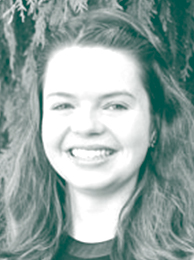 PROJECT
PROJECTAdvanced Generation and Storage Technologies for Deeply Decarbonized Power
ORGANIZATION / LOCATIONEnergy Systems Analysis Group, Princeton University
MENTOR(S)Tom Kreutz, Energy Systems Modeler, Andlinger Center for Energy and the Environment
SEE PRESENTATIONThe goal of this project was to explore methods for scheduling and allocating various power sources in the Pennsylvania-Jersey-Maryland power grid. We wanted to add wind power or increase existing wind power while still meeting demand. My daily activities included analyzing, comparing and compiling notes on previously written papers about this topic; transforming equations into workable code and debugging them; searching for and compiling existing data to feed into our models; and creating simulated data. I often read ahead in the papers and models we considered and was able to catch potential difficulties or components we might want to include in the code. I gained an appreciation for the complexities of incorporating higher amounts of renewable energy into the power mix. For renewable energy to be successful, we need to accurately predict how much of it will be available and when, as well as have a plan for scheduling it and accounting for discrepancies between predicted and actual power. This project developed my skills as a researcher, coder and member of a team. I now possess strong background knowledge about electricity scheduling, which could be helpful when I write my senior thesis combining my major in operations research and my certificate in environmental studies.
-
Webber, Marissa ’18
Civil and Environmental Engineering
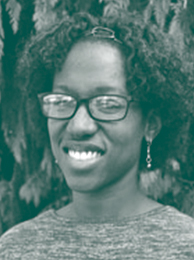 PROJECT
PROJECTLow Net-Carbon-Emission Biomass-based Transportation Scenarios in the U.S.
ORGANIZATION / LOCATIONAndlinger Center for Energy and the Environment, Princeton University
MENTOR(S)Eric Larson, Senior Research Engineer, Andlinger Center for Energy and the Environment
SEE PRESENTATIONI analyzed the potential of sustainable biofuels to replace conventional petroleum within the light-duty vehicle industry. We first reviewed the existing literature and governmental studies done to determine the carbon and energy balances for different sustainable feedstock in the United States. Then, we conducted a scenario analysis to determine what would be a feasible quantity of sustainable feedstock produced in the continental U.S. in 2050, and, therefore, how much petroleum could be displaced by the biofuel that could be made from this sustainable feedstock. While working on this project, I was able to hone my skills in research and analysis and familiarize myself with the study of biomass within sustainable energy. As a large project with many moving parts, this project required more of a systems approach and increased my ability to think about important details without losing sight of the ‘big picture,’ which will undoubtedly be useful in my future research endeavors.
-
Wong, Stephen ’19
Chemical and Biological Engineering
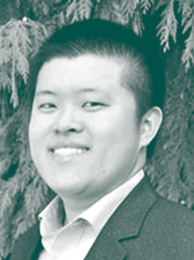 PROJECT
PROJECTActivity of Cobalt Phosphides as Catalysts for the Hydrogen Evolution Reaction
ORGANIZATION / LOCATIONDepartment of Chemical and Biological Engineering, Princeton University
MENTOR(S)Bruce Koel, Professor of Chemical and Biological Engineering
SEE PRESENTATION20 2017 Environmental Research Experiences Alternative Energy I examined cobalt phosphide (Co-P) surfaces for use as low-cost catalysts in hydrogen cells. Hydrogen cells represent a promising field of energy storage for use with intermittent renewable energy such as wind and solar power. These fuel cells utilize energy and specialized catalysts to convert water into hydrogen and oxygen. Cobalt phosphides represent a low-cost alternative to the current hydrogen catalyst, platinum. My work focused on fine-tuning the procedure required for the deposition of cobalt-phosphide films. I examined film samples under an X-ray photoelectron spectrometer to determine their surface compositions. I also tested successful films to determine their effectiveness as hydrogen catalysts. Furthermore, I assisted in the design of equipment that will be used in the lab to study the fundamental reactions occurring during hydrogen conversion. During this project, I learned how to properly use and troubleshoot electrodeposition to produce desired films. I also gained experience in surface analysis of both composition and catalytic activity. I learned more about the potential available to those who enter this field of research, and I feel this project gave me further insight into the field of efficient energy storage.
-
Zheng, Fred ’19
Mechanical and Aerospace Engineering
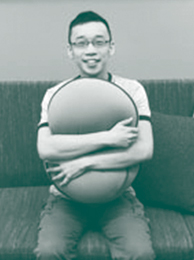 PROJECT
PROJECTClean Small Fusion Reactors
ORGANIZATION / LOCATIONPrinceton Plasma Physics Laboratory
MENTOR(S)Samuel Cohen, Director of the Program in Plasma Science and Technology, Princeton Plasma Physics Laboratory
SEE PRESENTATIONI spent the summer working on computational fluid models of an experimental nuclear-fusion device. This device has a field-reversed configuration as opposed to the normal tokamak configuration found in most nuclear-fusion devices. My primary job was to model the outermost layer of the reactor for potential use as a rocket engine. If done correctly, this will allow a nuclear-fusion device to directly power a spacecraft, which would greatly enhance the capabilities of space exploration. This internship was a fantastic opportunity for me to apply what I had learned in class to real-world applications. I had the chance to work with leading scientists and learn a lot about the laboratory environment, as well as the graduate-student life. Not only did I learn a lot about plasma physics and nuclear fusion, I also got experience working with computer modeling. This experience has opened my mind about pursuing plasma physics and graduate school after I graduate.
- Biodiversity and Conservation
-
Barber, Rebecca ’20
Computer Science
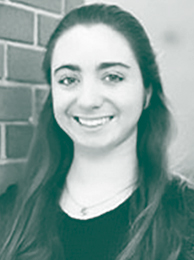 PROJECT
PROJECTModel-based Evaluation of Bubble Injection in Air-Sea Gas Exchange Parameterizations
ORGANIZATION / LOCATIONProgram in Atmospheric and Oceanic Sciences, Princeton University
MENTOR(S)Jorge Sarmiento, George J. Magee Professor of Geoscience and Geological Engineering and Professor of Geosciences; Seth Bushinsky, Postdoctoral Research Associate, AOS
SEE PRESENTATIONI performed research concerning gas exchange across the ocean’s air-sea boundary. Quantifying gas flux is paramount in measuring gas concentrations in the ocean, and gas concentrations help us calculate net community production. Net community production is a primary control on carbon distribution between the atmosphere and the ocean and, thus, has an impact on global warming. However, new air-sea gas parameterizations indicate the importance of explicitly including bubble injection to calculate gas fluxes. The purpose of my project was to assess the impact of adding a bubble-injection parametrization to the model of air-sea gas exchange. To analyze biogeochemical-model output, I programmed modules in MATLAB and designed illustrative graphs. I had an absolutely incredible experience working in the Program in Atmospheric and Oceanic Sciences (AOS), learning MATLAB, and meeting faculty and students from fields outside of what I usually study. Working in AOS introduced me to data analysis, and it taught me the importance of these skills across several different disciplines.
* This internship is connected to the PEI Climate and Energy Grand Challenges project, “Southern Ocean Observations and Modeling.”
-
Carabbia, Luke ’19
Ecology and Evolutionary Biology
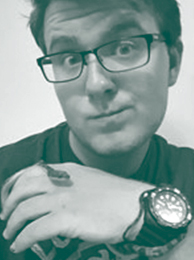 PROJECT
PROJECTEffects of El Niño Rainfall Patterns on the Population Dynamics of a Tropical Forest Bird
ORGANIZATION / LOCATIONPrinceton University and the Smithsonian Tropical Research Institute, Barro Colorado Island, Panama
MENTOR(S)Christina Riehl, Assistant Professor of Ecology and Evolutionary Biology
SEE PRESENTATIONI worked as a field assistant in the Riehl Lab — in collaboration with the Smithsonian Tropical Research Institute — on Barro Colorado Island in Panama. I studied the unique breeding pattern of the greater ani, a cooperatively breeding bird, as well as its decision-making abilities regarding adult allotment of food items to nestlings. I aided in monitoring the breeding groups’ activity and taking DNA swabs from laid eggs. In addition, I took blood samples from nestlings, banded them for later identification, and tracked their growth and feeding frequency through regular measurements and video recordings. I gained from this project an in-depth understanding of field biology, including different methods for acquiring data in a natural setting and the benefits of monitoring a biological system long-term. My summer internship inspired me to pursue field research for my senior independent work. I hope to analyze the ontogeny and variation of the bizarre mouthparts of the ani nestlings and experimentally test if they prompt a feeding response from parent birds.
* This internship is connected to the PEI Water and the Environment Grand Challenges project, “Effects of El Niño Rainfall Patterns on the Population Dynamics of a Tropical Forest Bird.”
-
Chan, Keo ’18
Geosciences
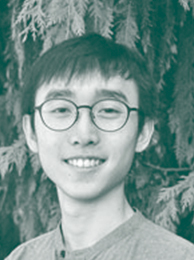 PROJECT
PROJECTNew Methods in Fish Otolith Geochemistry
ORGANIZATION / LOCATIONDepartment of Geosciences, Princeton University
MENTOR(S)Bess Ward, William J. Sinclair Professor of Geosciences and the Princeton Environmental Institute
SEE PRESENTATIONI analyzed the bones found in the ears of fish (otoliths) by looking at the stable isotopes found within them, which is a seldom-studied aspect of otoliths. Most of my daily work involved working on bone samples in the lab and taking them through a multi-step process, from initially dissecting them from frozen fish heads to running the samples on a mass spectrometer. We hope that a greater understanding of otolith geochemistry will help us understand the human impact on ecosystems and develop new metrics to measure this. This project highly influenced my choice of senior thesis and supports future publications in the Ward lab.
-
Demian, Nadeem ’19
Ecology and Evolutionary Biology
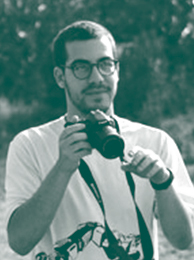 PROJECT
PROJECTImpact of Grazing Regimes on Rangeland Quality and Wildlife and Livestock Use
ORGANIZATION / LOCATIONMpala Research Centre, Kenya
MENTOR(S)Daniel Rubenstein, Class of 1877 Professor of Zoology and Professor of Ecology and Evolutionary Biology
SEE PRESENTATIONI interned with Professor Daniel Rubenstein conducting research on livestock-grazing and cattle-rearing methods at the Mpala Research Centre in Nanyuki, Kenya, and on surrounding properties. The goal was to better understand the impact of livestock grazing on rangeland in northern Kenya, as well as to understand the financial aspects of different cattle-rearing methods. Using GPS trackers and accelerometers, we analyzed the “wisdom of the herder” and how herds moved on the rangeland. We also conducted interviews with ranch owners to get their opinions of the financial and social aspects of cattle rearing. We hosted the first large gathering of private ranch owners in northern Kenya to foster interest in our search for the most sustainable cattle-rearing method. I gained invaluable skills in many different areas, from communication to technology, and I was able to immerse myself in the world of field research. I thoroughly enjoyed my time at Mpala and hope to return for my senior-thesis research.
* This internship is connected to the PEI Development Grand Challenges project, “Water, Savannas and Society.”
-
Demmel, Megan ’19
Ecology and Evolutionary Biology
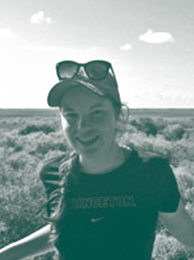 PROJECT
PROJECTThe Spatial Ecology of African Savana Herbivores in the Absence of Predation
ORGANIZATION / LOCATIONEdward O. Wilson Biodiversity Laboratory, Gorongosa National Park, Mozambique
MENTOR(S)Corina Tarnita, Assistant Professor of Ecology and Evolutionary Biology
SEE PRESENTATIONI helped on a study of predator-prey interactions at Gorongosa National Park in Mozambique. We investigated the “landscape of fear” theory, which suggests that predators can affect the movement of prey even without direct interactions. I helped set up speakers to play predator sounds in different locations throughout the park, and arranged camera traps nearby to record animals’ reactions. I analyzed and sorted many of the resulting videos and identified the species in each one. I also helped set up experiments to determine how herbivore movement might affect vegetation. I gained skills valuable to fieldwork, such as using GPS and animal identification. I left with a better understanding of the range of questions one can explore in ecology, of the questions that have yet to be answered, and of the importance of community engagement in conservation. Having spent so much time in such a unique and exciting ecosystem, I gained a keen sense of the importance of protecting these areas, and I hope to continue pursuing research on the African savanna during my time at Princeton.
* This internship is connected to the PEI Development Grand Challenges project, “Ecosystem Spatial Pattern and Development Opportunities in African Rangelands.”
-
Didion, Kathryn ’19
English
 PROJECT
PROJECTTeaching Assistant for Conservation Clubs
ORGANIZATION / LOCATIONMpala Research Centre, Kenya
MENTOR(S)Daniel Rubenstein, Class of 1877 Professor of Zoology and Professor of Ecology and Evolutionary Biology
SEE PRESENTATIONThe Northern Kenya Conservation Clubs (NKCC) provide after-school classes at 12 local elementary schools to educate students about conservation and help combat local land degradation. I worked with NKCC to plan, execute and teach at Community Conservation Day, an event that showcases what each school learned during the year. More than 400 students participated in 2017. A new activity, Habitats of Kenya — inspired by a project I did in fourth grade — was created in response to students’ confusion as to what a forest habitat is. Most of them had never seen a habitat other than the arid one in which they live. The activity was done in nine of the 12 schools and portrayed the four main habitats in Kenya. It blended art and science to show students how improper land use can lead to desertification and habitat loss. I also had the chance to open a new library at one of the schools, and I designed and painted a mural on the exterior of another. Drawing on my experiences in art, creative writing, teaching and conservation, this internship allowed me to experiment with learning techniques and become a better communicator, teacher and leader.
* This internship is connected to the PEI Development Grand Challenges project, “Water, Savannas and Society.”
-
Halaweh, Majida ’19
History
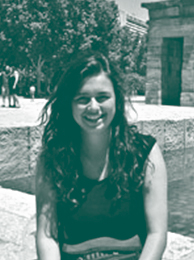 PROJECT
PROJECTHabitat Exchange Intern
ORGANIZATION / LOCATIONEnvironmental Defense Fund, California
MENTOR(S)Cynthia Spencer, Business Operations Specialist, Environmental Defense Fund
The goal of my project was to develop a database of background information to help develop a policy platform for the Environmental Defense Fund. My primary responsibilities focused on researching a variety of different topics that were critical to understanding policy issues, as well as creating presentations of this information. I learned much about the function of an environmental nonprofit organization, and the important role that these organizations play in influencing policymakers. This experience allowed me to explore a possible research career and honed my abilities to put complicated information into an easy-to-understand format.
-
Iqbal, Azwad ’19
Ecology and Evolutionary Biology
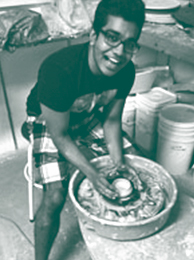 PROJECT
PROJECTPlant-Herbivore Interactions at the Scale of the African Continent
ORGANIZATION / LOCATIONPrinceton University; Nyika National Park, Malawi; Kafue National Park, Zambia
MENTOR(S)Robert Pringle, Assistant Professor, and Johan Pansu, Postdoctoral Research Associate, Department of Ecology and Evolutionary Biology
SEE PRESENTATIONI was involved in a study to identify the diets of large herbivorous mammals in African national parks in order to investigate the underlying ecological dynamics of the sampling sites. These data could be used refine, adapt and identify large-scale management practices for the preservation of wild areas in Africa. Our techniques involved metabarcoding fecal samples in order to identify the plant species animals consumed in a given location. The sequenced DNA was cross-referenced with a plant database and a network was built to connect the target species with their dietary plants. This information was compared with others species in the same area and similar target species in other parks. We spent a month identifying and collecting fecal samples in Nyika National Park in Malawi and Kafue National Park in Zambia. The samples were processed in the evenings and rated in terms of freshness. This internship was a unique combination of fieldwork and lab work, which taught me important lab skills and illuminated potential avenues for future research. It also helped develop my ambition to go to graduate school.
* This internship is connected to the PEI Development Grand Challenges project, “Ecosystem Spatial Pattern and Development Opportunities in African Rangelands.”
-
Marsh, Anna ’20
Architecture
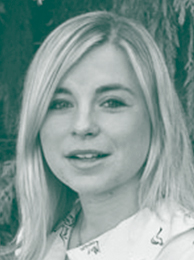 PROJECT
PROJECTPlant Defenses in an African Savanna: Do Herbivores Make Plants More Thorny?
ORGANIZATION / LOCATIONMpala Research Centre, Kenya
MENTOR(S)Robert Pringle, Assistant Professor, and Tyler Coverdale, graduate student, Department of Ecology and Evolutionary Biology
SEE PRESENTATIONI spent the summer collecting data on plant defense mechanisms in the savanna. We studied a range of plants to determine how herbivore predation informs plant phenotype. Using GPS technology and basic measuring tools, we found that there is a significant relationship between a plant’s proximity to large trees and its thorn density. Larger plants can serve as a proxy defense mechanism that negates a smaller plant’s need to invest energy in growing thorns. It was amazing observing giraffes, elephants and zebras on my daily commute to different data-collection sites. I met students and researchers from all over the world while living and working at Mpala. Meals and downtime were complemented by conversations on projects such as baboon behavior and livestock management. As a prospective architecture major, this exposure to a unique ecosystem reminded me that natural concepts can be applied to modern development and infrastructure. For instance, I learned about termite homes and how they incorporate systems of ventilation underground, which could be used to reduce urban energy demands. ]
* This internship is connected to the PEI Water and the Environment Grand Challenges project, “Experimental Tests of Drought and Deluge in African Rangelands.”
-
Martinez, Lindsay ’19
Ecology and Evolutionary Biology
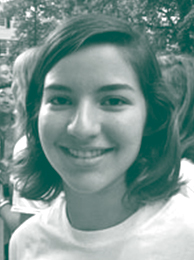 PROJECT
PROJECTParasite Levels in Zebras and Co-occurring Domesticated Donkeys
ORGANIZATION / LOCATIONMpala Research Centre, Kenya
MENTOR(S)Daniel Rubenstein, Class of 1877 Professor of Zoology and Professor of Ecology and Evolutionary Biology
SEE PRESENTATIONI spent my summer internship living and working at the Mpala Research Centre in Laikipia County, Kenya. Mpala is home to many species of both wild and domesticated animals. While working on the parasite project, I focused on observing plains zebras, the rare Grévy’s zebras, and domestic donkeys. The parasite of interest in the project is the strongyle, a nematode found in the gastrointestinal track of the aforementioned equines whose numbers I quantified by analyzing dung via the McMaster technique. The goal of the project is to determine parasite loads for individual animals and then see how other variables such as the animal’s sex, group or body condition relate to its parasite load. Because parasite loads have health implications for the animals, this research is important to those working on zebra conservation, as well as ranchers or pastoralists who want to raise healthy donkeys. As both an ecology and evolutionary biology student and an aspiring wildlife conservationist, I look forward to returning to Mpala next summer to continue learning and to begin senior-thesis research that will develop the skills I learned.
* This internship is connected to the PEI Development Grand Challenges project, “Water, Savannas and Society.”
-
McCoy, Atarah ’20
Woodrow Wilson School
 PROJECT
PROJECTDevelop Model for Alternative Seafood- Distribution Chain
ORGANIZATION / LOCATIONFishadelphia
MENTOR(S)Talia Young, Postdoctoral Research Associate, Department of Ecology and Evolutionary Biology
I worked with Talia Young to develop Fishadelphia into a community-supported fishery (CSF) program that would connect Jersey Shore harvesters with communities in Philadelphia. Together, we focused our efforts on making Fishadelphia into a CSF that would connect New Jersey Shore harvesters with communities in Philadelphia. Our goal was to provide racially and economically diverse communities with greater access to community-supported fishery programs that can improve the income of community harvesters and provide consumers with healthier and fresher seafood. Over the summer, I researched CSF business models, analyzed survey and focus-group data collected from Talia’s previous research, and generated weekly logistical and structural reports for Fishadelphia to implement in its business model. Through my work with Fishadelphia, I learned more about what the process of creating and executing resolutions to promote equality involves within a business framework. My work substantiated my interest in civic values, health and social justice, and I look forward to applying what I’ve learned to my academic endeavors as a concentrator in the Woodrow Wilson School of International and Public Affairs.
-
Nutter, Ciara ’18
Ecology and Evolutionary Biology
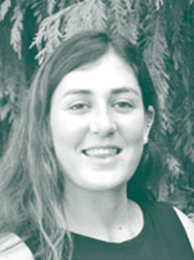 PROJECT
PROJECTPlant-Herbivore Interactions at the Scale of the African Continent
ORGANIZATION / LOCATIONPrinceton University; Gorongosa National Park, Mozambique; Nyika National Park, Malawi; Kafue National Park, Zambia
MENTOR(S)Robert Pringle, Assistant Professor, and Johan Pansu, Postdoctoral Research Associate, Department of Ecology and Evolutionary Biology
SEE PRESENTATIONI researched the mechanisms that influence herbivore coexistence and plant-herbivore interactions. Understanding these mechanisms could allow for a better grasp of threatenedecosystem conservation. My project investigated the factors that influence dietary-niche overlaps and the structure of the plant-herbivore interaction network at the continental scale. Both are strong indicators of system stability, which is especially important at a time when global defaunation is a critical issue. I was heavily engaged in identifying, collecting and processing fecal samples from large herbivores in each country we visited. I was instrumental in extracting the DNA used to determine the plant species contained within each sample. My summer internship inspired me to explore a future in research and gave me insight into the life of a graduate student in ecology and evolutionary biology. I also was reminded of the importance of intertwining ecological research with community development, as much of our success at each field site hinged on collaboration with local communities.
* This internship is connected to the PEI Development Grand Challenges project, “Ecosystem Spatial Pattern and Development Opportunities in African Rangelands.”
-
Petticord, Daniel ’19
Ecology and Evolutionary Biology
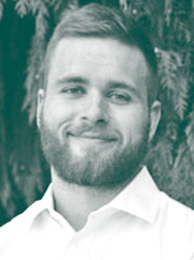 PROJECT
PROJECTDrones, Drones Everywhere: New Tools for High- Definition Rangeland Assessment
ORGANIZATION / LOCATIONMpala Research Centre, Kenya
MENTOR(S)Daniel Rubenstein, Class of 1877 Professor of Zoology and Professor of Ecology and Evolutionary Biology
SEE PRESENTATIONThe goal of my summer project was to test the efficacy of a new type of rangeland observation that uses drone photography, QGIS image manipulation, and machine learnining. The intended end product was an autonomous program that could use drone photography to test for vegetation transects in hard-to-reach areas, or large areas in a much shorter time frame. My contribution involved a lot of drone piloting in the field, as well as debugging and implementing code to handle the drone images and training data used for our identifications. A great deal of my work revolved around ground-truthing in the field so that I could later accurately group landmass types in the aerial images. This project has opened me up to new potential ideas in two chief ways. First, it has shown me that I really thrive and enjoy working in “extreme” conditions in the field, and, second, that I can use advanced technology to manipulate and streamline preexisting research methods.
* This internship is connected to the PEI Development Grand Challenges project, “Water, Savannas and Society.”
-
Pratt-Thompson, Katherine ’18
Art History
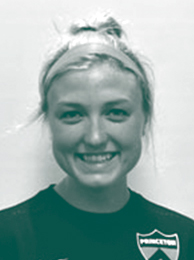 PROJECT
PROJECTThe Ecocritical Exhibition
ORGANIZATION / LOCATIONPrinceton University Art Museum
MENTOR(S)Karl Kusserow, John Wilmerding Curator of American Art, Art Museum
I conducted research for the exhibition, “Nature’s Nation: American Art and Environment.” This exhibition rethinks the history of American art in relation to ecology and environmental history by examining how American artists have reflected and shaped environmental understanding, while also shedding light on the emergence of a modern ecological consciousness. It combines art history, environmental history and scientific analysis with the emerging discourse of ecocriticism. I spent most of the summer researching the process behind creating an exhibition catalog. These encyclopedias of knowledge allow individuals to engage with the pieces of an exhibition both intellectually and visually, but they also create a significant ecological footprint between the printing process, the energy usage and the waste produced. My task was to create a web design that complemented the exhibition. The website will guide visitors through the complicated decision-making that goes into the creation of a catalog. The construction of this online space comes with the hope that by shedding light on the environmental impact of art catalogs, a dialogue can be opened on ways in which this process can — and should — be made more environmentally cognizant moving forward.
-
Redding, Erin ’19
Woodrow Wilson School
 PROJECT
PROJECTTeaching Assistant for Conservation Clubs
ORGANIZATION / LOCATIONMpala Research Centre, Kenya
MENTOR(S)Daniel Rubenstein, Class of 1877 Professor of Zoology and Professor of Ecology and Evolutionary Biology
SEE PRESENTATIONI taught at local conservation clubs in primary and secondary schools throughout Laikipia County, Kenya. As conservation-club interns, we developed interactive curricula for the after-school clubs that aimed to be both fun and informative. In addition, we helped plan Community Conservation Day, a day where all of the schools and surrounding community congregate in celebration of the environment to share what they learned in their conservation clubs. During my experience, I learned a lot about the ecology of Kenya and the effect of human environmental interactions. I thoroughly enjoyed getting to know my students and learn about the various tribal lifestyles in Kenya. While I may not become a biology teacher, this internship broadened my perspective of global, cultural and economic differences, which I can definitely apply to my major or future career in international policy.
* This internship is connected to the PEI Development Grand Challenges project, “Water, Savannas and Society.”
-
Smart, Zachariah ’19
Ecology and Evolutionary Biology
 PROJECT
PROJECTEffects of El Niño Rainfall Patterns on the Population Dynamics of a Tropical Forest Bird
ORGANIZATION / LOCATIONPrinceton University and the Smithsonian Tropical Research Institute, Barro Colorado Island, Panama
MENTOR(S)Christina Riehl, Assistant Professor of Ecology and Evolutionary Biology
SEE PRESENTATIONThis was my second summer as a field assistant for a long-term study of the breeding biology of the greater ani, a Neotropical cuckoo. Pairs of greater anis cooperatively build a nest, lay eggs and raise their young, which makes them ideal for answering questions about the evolution of cooperation. My research — which will likely become my senior-thesis project — focused on how climate variables and regimes such as El Niño affect the anis’ reproductive success. I piloted a boat every day to find and observe nests on Barro Colorado Island. We took DNA samples from eggs and nestlings to establish their parentage and sibling relationships, then we observed their behavior and monitored the survival rates of eggs and nestlings. We also placed nest-monitoring cameras to capture predation. It was amazing to return to the project with an ability to ask deeper questions. Christie is an approachable and knowledgable mentor. I learned a ton from her, from lab manager Meghan Strong, and the other lab members. It was mindblowing to be immersed in the Panamanian tropical lowland forest for another two months. Thank you, PEI!
* This internship is connected to the PEI Water and the Environment Grand Challenges project, “Effects of El Niño Rainfall Patterns on the Population Dynamics of a Tropical Forest Bird.”
-
Spinelli, Madison ’20
Undeclared
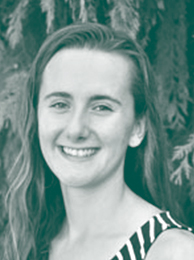 PROJECT
PROJECTParasite Levels in Zebras and Co-Occurring Domesticated Donkeys
ORGANIZATION / LOCATIONMpala Research Centre, Kenya
MENTOR(S)Daniel Rubenstein, Class of 1877 Professor of Zoology and Professor of Ecology and Evolutionary Biology
SEE PRESENTATIONI spent my summer working on the Princeton Zebra Project. This summer was focused on the relationship between parasites and immunoglobulin levels in the Grévy’s and plains zebras, as well as co-occurring domesticated donkeys. My primary job was to collect fecal samples, observe zebra behavior, and do vegetation transects. In the lab, I analyzed fecal samples for parasite-egg counts and helped with the immunoglobulin analysis using the ELISA assay, which uses horse antibodies to measure the levels of immunoglobulin in a sample. My research partner and I also worked on our own project that focused on parasite levels in domesticated donkeys. Our experiment consisted of splitting the donkeys into two grazing groups — one with cattle and one without — and measuring the differences in parasite levels. The results of our research showed that the donkey group with cattle had fewer parasites than the group that grazed alone because the cattle — which are unaffected by the parasites — absorbed most of the parasites, leaving less for the donkeys to absorb. Through this internship, I was able to gain valuable field-research and lab skills as well as implement my own research project. I also learned what it entails to work in a research discipline.
* This internship is connected to the PEI Development Grand Challenges project, “Water, Savannas and Society.”
-
Stahl, Maria ’20
Ecology and Evolutionary Biology
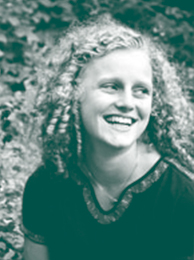 PROJECT
PROJECTDynamics of the Restoration of an African Savanna
ORGANIZATION / LOCATIONGorongosa National Park, Mozambique
MENTOR(S)Robert Pringle, Assistant Professor of Ecology and Evolutionary Biology
I assisted a graduate student with his research regarding the effects of large mammalian herbivores on the vegetation of Gorongosa National Park. This area was recently the site of a destructive civil war, which has had dramatic lasting impacts on the species composition of the park. The Pringle Lab is studying interspecific relationships and how these interactions between species might help restore Gorongosa to its pre-war levels of biodiversity. The research we conducted included collecting ungulate fecal samples for dietary analysis, surveying and maintaining plots simulating herbivore activity on the floodplain, sorting through camera-trap photos, and recording which species most frequently graze the land. Through this internship, I not only learned about ecology in an exciting and unique setting, but I also gained insight into what it means to be a field biologist, including how to set up, carry out and learn from experiments. The experience I had in Mozambique helped me develop the necessary skills to continue studying ecology and evolutionary biology, and it taught me how to incorporate conservation into other aspects of my studies.
* This internship is connected to the PEI Development Grand Challenges project, “Ecosystem Spatial Pattern and Development Opportunities in African Rangelands.”
-
Whitfield, Ayame ’20
Geosciences
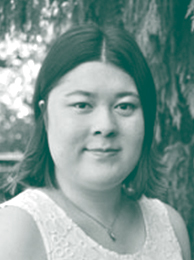 PROJECT
PROJECTTesting the Roles of Deccan Volcanism vs. Chicxulub Impact in the K-Pg Mass Extinction
ORGANIZATION / LOCATIONDepartment of Geosciences, Princeton University
MENTOR(S)Gerta Keller, Professor of Geosciences
I investigated the effects of Deccan volcanism on the size of a foraminifera called Guembelitria. Foraminifera are marine lifeforms with a hard calcium-carbonate shell, often around the size of a grain of sand, and examining their fossil record can often be used as a way to determine the environmental conditions at a specific time. I looked at a phenomenon called dwarfing, which is a drop in the size of adult members of a species and a sign of environmental stress. I was tasked with picking the foraminifera out of sediment samples using a microscope and a paintbrush to gently lift them out. I then used a scanning electron microscope to image and measure them so that we could compare their sizes before and after the Cretaceous Extinction, or the event that killed the dinosaurs. We found that the Guembelitria specimens in the samples showed dwarfing, indicating high levels of stress in the ocean around that time, but also were more numerous than other species due to their ability to thrive after disasters. Over the course of the summer, I learned how to work with professors and graduate students, and in general gained experience in the lab.
- Climate and Oceans
-
Carlson, Stephen ’19
Ecology and Evolutionary Biology
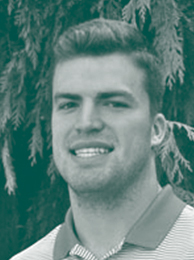 PROJECT
PROJECTVariability in Oxygen Minimum Zones
ORGANIZATION / LOCATIONDepartment of Geosciences, Princeton University
MENTOR(S)Laure Resplandy, Assistant Professor of Geosciences and the Princeton Environmental Institute
SEE PRESENTATIONThe goal of my research was to quantify natural O2 variability in Oxygen Minimum Zones (OMZs). OMZs are areas in the ocean where oxygen levels are at their lowest. Organisms can become stressed and ultimately die if oxygen is too low for too long. Global warming is bringing an expansion of OMZs, which limits habitat range for fish and negatively affects fisheries. My partner and I graphed oxygen levels in the ocean over the past 50 years, focusing on the Bay of Bengal and the Arabian Sea. We looked at factors that contribute to oxygen levels in the water, such as salinity, temperature, wind and currents. I perfected skills throughout the eight weeks, such as coding in MATLAB, and gained a general knowledge about climate change. Both will be extremely helpful in my career search. The oceanography work I did has also prepared me for my upcoming junior and senior independent-research projects.
-
Dogariu, Eric ’20
Electrical Engineering
 PROJECT
PROJECTBubbles in a Turbulent Environment
ORGANIZATION / LOCATIONDepartment of Mechanical and Aerospace Engineering, Princeton University
MENTOR(S)Luc Deike, Assistant Professor of Mechanical and Aerospace Engineering and the Princeton Environmental Institute
SEE PRESENTATIONThis project sought to characterize aspects of wave-breaking and turbulence in the ocean by simulating turbulent flows in a tank and describing the behavior of bubbles in still water and turbulent flow. When a wave breaks at the surface, turbulence and air bubbles are created. The resulting exchange of gas and energy at the air-sea boundary is an important dynamic. This experiment simulated and described these complex processes. This was done by using a high-speed camera and MATLAB to track the motion of the bubbles. Particle Image Velocimetry (PIV) was used to characterize the flow as well. We also employed MATLAB to develop software that tracked bubbles in the turbulent flow. We used a laser to cut out parts for the experiment, such as a stand for the needle in the tank. Throughout the internship, we learned a lot about the scientific process and how to function in a research lab. Furthermore, we learned a lot of programming skills, particularly in MATLAB. This experience reaffirmed my goal of going to graduate school and becoming a scientific researcher.
* This internship is connected to the PEI Urban Grand Challenges project, “Extreme Wave Breaking in Coastal Urban Areas.”
-
Duffey, Kyle ’19
Geosciences
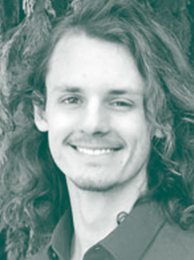 PROJECT
PROJECTCalibrating Climate Records with 16 million-year- old Volcanic Rocks, NW USA
ORGANIZATION / LOCATIONDepartment of Geosciences, Princeton University
MENTOR(S)Blair Schoene, Associate Professor of Geosciences
SEE PRESENTATIONThe goal of my internship was threefold. First, I traveled to the Columbia River Basalt (CRB) province in Washington to help Josh Murray ‘18 collect samples for his research on carbon dioxide outgassing from the CRB eruptions 5 million-16 million years ago. In the field, I gained an improved ability for searching for outcrops, specifically mafic dikes. Second, on campus, I assisted Jennifer Kasbohm, a fifth-year graduate student in geosciences, by processing her samples from the same geological region. Her research consists of using uranium-lead radiometric dating (U-PB dating) to figure out the ages of different stratigraphic sections of the CRB province. I helped Jennifer perform zircon mineral separation on her samples. Through the work I did with Jennifer, I gained valuable lab experience, and I developed an understanding of various lab materials that I will need to use for my own research. Finally, I worked on an independent project using a handheld X-ray fluorescence device. I began by collecting data in the field, and, back on campus, I worked closely with Blair Schoene on planning the data analysis. I have now taken on this project as my junior independent work.
-
Geyman, Emily ’19
Geosciences
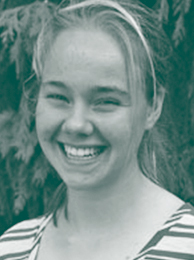 PROJECT
PROJECTHow Do Carbonates Record Sea Level and Seawater Chemistry
ORGANIZATION / LOCATIONDepartment of Geosciences, Princeton University; Bahamas
MENTOR(S)Adam Maloof, Associate Professor of Geosciences
SEE PRESENTATIONMuch of our understanding of Earth history comes from shallow-water carbonates. A calibration to directly observe how ocean chemistry, temperature and sea level are recorded in modern carbonates, such as those on the Great Bahama Bank (GBB), will help us better interpret climate from ancient stratigraphy. I did fieldwork in the Bahamas mapping different facies (grain-size distributions) and environments, and collecting seawater and sediment samples for geochemical analysis in the lab at Princeton. Ultimately, I hope to integrate these chemical and physical field observations with probabilistic techniques — including Markov Chain Monte Carlo (MCMC) methods — to develop a quantitative method for calculating the relative likelihoods that observed facies transitions and δ13C fluctuations in ancient stratigraphy represent global changes in sea level and ocean chemistry, rather than natural shelfal variability.
-
Jacobson, Tess ’19
Physics
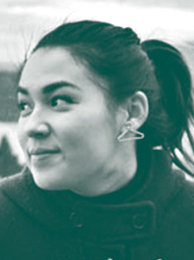 PROJECT
PROJECTImpact of Climate on North Atlantic Tropical-Cyclone Tracks
ORGANIZATION / LOCATIONDepartment of Geosciences, Princeton University
MENTOR(S)Gabriel Vecchi, Professor of Geosciences and the Princeton Environmental Institute
SEE PRESENTATIONI researched the ways tropical-cyclone tracks change with different climate-warming models. I looked primarily at North Atlantic tropical cyclones, as well as some South Indian Ocean cyclones. Using Python, I separated all North Atlantic tropical cyclones from 1980- 2007 into six distinct clusters, based on their locations and tracks. Then, by doing the same clustering for hurricane tracks from climate models with warming signals, I was able to see the way each cluster behaved with the different climate models. I found that the basin-wide reduction of storms predicted by climate models was mostly accounted for by storms in the subtropics — North Atlantic storm frequency doesn’t decrease everywhere with warming. During this project, I learned to program in Python and work with large datasets. I also attended a weekly reading group on climate in the Program in Atmospheric and Oceanic Sciences, and learned quite a lot about the field of oceanography. I plan on pursuing a Ph.D., so the knowledge and skills that I gained during the summer will help me better navigate academia and my future research.
-
Morin, Stephen ’19
Woodrow Wilson School
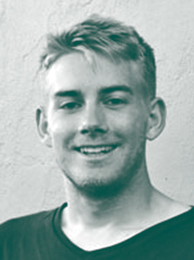 PROJECT
PROJECTTechnology Innovations for Addressing Fishery-Management Issues
ORGANIZATION / LOCATIONEnvironmental Defense Fund, California
MENTOR(S)Rod Fujita, Director of Research and Development, Environmental Defense Fund
SEE PRESENTATIONI worked at the Environmental Defense Fund’s Oceans Program researching emerging ocean technologies that can be used to solve different problems with fisheries management, such as counting fish and combatting illegal fishing. It was a fulfilling experience, as I learned about all the complications with forming viable fishery policy and how creative solutions are being employed.
-
O’Connor, Liam ’20
Geosciences
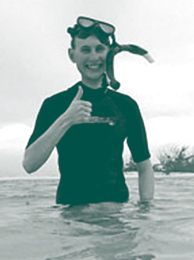 PROJECT
PROJECTFifty Shades of Blue: Using Seawater Chemistry to Understand Past Sea Levels
ORGANIZATION / LOCATIONMaloof Earth History Group, Bahamas
MENTOR(S)Adam Maloof, Associate Professor of Geosciences
SEE PRESENTATIONAmericans go to the Bahamas to enjoy its blue water, white-sand beaches and tropical climate. Few realize the treasure trove of scientific information beneath their feet. My internship focused on gathering data around Andros Island. For two weeks, I camped on a deserted island with only two other people. We took water and sediment samples at various gridpoints. I was responsible for recording meteorological and oceanic-chemistry data. Sharks frequently swam near our boat and large land crabs scattered through the sand. At the beginning of the third week, we moved to a mangrove swamp on Andros Island’s western edge where I helped a graduate student fly a drone to capture aerial imagery of stream networks as part of his dissertation. We then waded through mud that was knee-deep to measure the depth of those streams. When these data are coupled, he will be able to calculate the depths of channels based on the brightness of their blue color. For the final five weeks, I analyzed sediment samples in a lab at Princeton. By analyzing the spatial distribution of sediment-grain sizes and the oceanic conditions under which they formed, geologists will be able to better understand Earth’s past climates. This internship gave me insight into one of the planet’s most fascinating natural processes. It has inspired me to conduct my own research as an undergraduate and pursue a degree in graduate school.
-
Ogoke, Francis ’19
Chemical and Biological Engineering
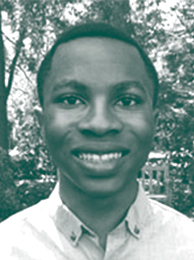 PROJECT
PROJECTBubbles in a Turbulent Environment
ORGANIZATION / LOCATIONDepartment of Mechanical and Aerospace Engineering, Princeton University
MENTOR(S)Luc Deike, Assistant Professor of Mechanical and Aerospace Engineering and the Princeton Environmental Institute
SEE PRESENTATIONI studied the behavior of air bubbles in turbulent water. When waves break, small bubbles of gases such as CO2 that are trapped in the ocean rise into the upper ocean, which increases the rate of gas exchange between the ocean and atmosphere. A key unknown variable is bubble-rise velocity. I used a controlled air-injection mechanism to introduce bubbles into a water tank. I tested different methods for creating controlled turbulent flows, then captured detailed video of bubble behavior using a high-speed camera. To analyze the data, I used MATLAB to track the evolution of the bubbles’ size, speed and shape over time. I also used Particle Image Velocimetry to analyze the nature and characteristics of the produced turbulent flow. I gained experience applying my coursework to a research problem and I developed skills using tools such as MATLAB to perform data analysis and image processing. I plan to continue this project during my junior year by investigating the influence of surfactants and non-polar substances on the behavior and bursting dynamics of air bubbles at an airwater interface.
* This internship is connected to the PEI Urban Grand Challenges project, “Extreme Wave Breaking in Coastal Urban Areas.”
-
Peng, Sisi ’19
Geosciences
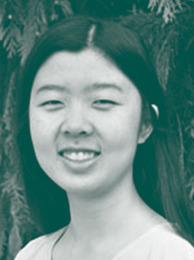 PROJECT
PROJECTImpacts of Sea-Level Rise on the Release of Halomethanes from Coastal Systems
ORGANIZATION / LOCATIONDepartment of Geosciences, Princeton University
MENTOR(S)Satish Myneni, Professor of Geosciences
SEE PRESENTATIONThis project aimed to determine the effects of sea-level rise and associated environmental changes — in particular, the presence of additional ions, the availability of oxygen, and pH levels — on soil with bromide ions in the New Jersey Pine Barrens. During the summer, I ran reactions that varied the concentrations of bromide, sulfate and bicarbonate ions, then made pellets of half of the samples after the reactions finished. My data demonstrated that in the presence of sulfate under anoxic conditions, both chloride and bromide levels in Pine Barrens’ soil drop. I learned how to use and prepare samples for a benchtop X-ray fluorescence machine, and I also improved my organizational and data-analysis skills. I continued the project for my fall semester junior independent work by making pellets of the other half of the samples and by analyzing and comparing the data to those already analyzed to determine how or whether soil type impacts these bromide reactions.
* This internship is connected to the PEI Water and the Environment Grand Challenges project, “Adsorption of Emerging Organic Contaminants on Clay Surfaces.”
-
Peterson, Kimberly ’19
Geosciences
 PROJECT
PROJECTSurface Heat and Carbon Flux in the Southern Ocean
ORGANIZATION / LOCATIONProgram in Atmospheric and Oceanic Sciences, Princeton University
MENTOR(S)Jorge Sarmiento, George J. Magee Professor of Geoscience and Geological Engineering and Professor of Geosciences; Haidi Chen, Postdoctoral Research Associate, AOS
SEE PRESENTATIONThe Southern Ocean is an important part of the global heat and carbon budgets, but its workings are not well understood. The purpose of this project was to analyze observational and model data to diagnose the driving mechanisms behind the interannual variability in heat and carbon flux across the Southern Ocean. With the guidance of my mentor, I organized and analyzed float and model data using MATLAB and created multiple graphs in order to present this data. My understanding and skills in MATLAB improved quite a bit, as did my understanding of physical oceanography and the Southern Ocean. This internship gave me the tools to model my junior project and thesis off of, and gave me an interest in studying the Southern Hemisphere’s dynamics, as they are relatively understudied but can yield important and interesting findings.
* This internship is connected to the PEI Climate and Energy Grand Challenges project, “Southern Ocean Observations and Modeling.”
-
Pham, Tiffany ’20
Undeclared
 PROJECT
PROJECTCoral Reef Nutrient Cycling: A Stable Isotope of the Bermuda Reefs
ORGANIZATION / LOCATIONDepartment of Geosciences, Princeton University
MENTOR(S)Daniel Sigman, Dusenbury Professor of Geological and Geophysical Sciences and Professor of Geosciences
SEE PRESENTATIONI helped study the relationship and nutrient dynamics between Bermuda corals and their algal symbionts under different light and feeding conditions. I was responsible for processing coral samples, then testing their algal-symbiont and chlorophyll content. Corals were processed by thawing them, homogenizing them in seawater, then centrifuging the samples and separating the coral tissue from the symbionts. To determine symbiont content, the samples were analyzed under a microscope and the numbers of algal symbionts were recorded. Then, the samples were analyzed with a fluorometer to carry out the chlorophyll count, specifically for chlorophyll a. The data were then analyzed in the context of different light and feeding conditions. This internship was essential for gaining experience in wet-lab research and for getting a taste of a career in research. I am truly grateful to both PEI and my mentor, [Princeton graduate student] Victoria Luu, for making this experience possible.
* This internship is connected to the PEI Water and the Environment Grand Challenges project, “Coral Nitrogen Isotopes as a Recorder of Natural and Human-Driven Changes in the Nutrient Conditions of Oceanic Surface .”
-
Rinaldi, Nicole ’18
Geosciences
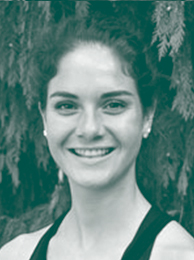 PROJECT
PROJECTExtreme Climates in Tropical Coral Reefs
ORGANIZATION / LOCATIONProgram in Atmospheric and Oceanic Sciences, Princeton University
MENTOR(S)Keith Rodgers, Research Scholar, Atmospheric and Oceanic Sciences; Sarah Schlunegger, Ph.D. Candidate, Atmospheric and Oceanic Sciences
SEE PRESENTATIONThis summer, I worked with large-ensemble climate models from the Geophysical Fluid Dynamics Laboratory in Princeton. Using these models, I looked at projected changes in sea-surface temperature and acidification through time, and how these changes could adversely affect coral reef systems. A key aspect of this research was trying to determine how much warming could be attributed to anthropogenic sources and how much was driven by natural variability. While this study is very different to the proxy-filled past climate work I have done, I found it to be extremely relevant. All of the current data indicate a warmer and warmer future climate. It is extremely important to be able to predict such trends and help shape the discussion of what our future will look like in the years ahead. Using these models has enabled me to see firsthand how we have influenced our environment, and how we will continue to do so in the future.
* This internship is connected to the PEI Water and the Environment Grand Challenges project, “Coral Nitrogen Isotopes as a Recorder of Natural and Human-Driven Changes in the Nutrient Conditions of Oceanic Surface Waters.”
-
Rusley, Calvin ’20
Geosciences
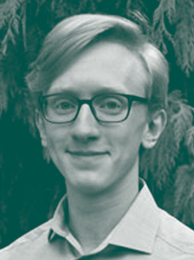 PROJECT
PROJECTWho is Oxidizing All the Earth’s Atmospheric CH4?
ORGANIZATION / LOCATIONDepartment of Geosciences, Princeton University
MENTOR(S)Tullis Onstott, Professor of Geosciences
This summer I assembled the bacterial genome of Upland Soil Cluster Alpha (USCα), which resides in the Canadian High Arctic. The study site at Axel Heiberg Island has been found to absorb more methane than it releases into the atmosphere (the opposite is generally true in the permafrost-affected region). However, the regional extent of this characteristic is unknown. By assembling and characterizing the genome of this high-affinity aerobic methanotroph, we can determine its probable geographic extent. This information can then be used to more accurately calculate a global methane budget. In order to characterize USCα, I learned how to use programs for genome assembly, metagenomic binning (the sorting of DNA fragments from many species), genome annotation, and the creation of phylogenic trees. These skills are incredibly useful going forward as unculturable bacteria are increasingly the source of new microbiological discoveries, and are found through cultivation-independent techniques (metagenomic sampling and single-cell genomics). Ultimately, this experience has solidified my intention to major in geosciences.
-
Sakkal, Marah ’20
Undeclared
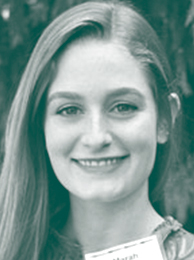 PROJECT
PROJECTImpacts of Sea-Level Rise on the Release of Halomethanes from Coastal Systems
ORGANIZATION / LOCATIONDepartment of Geosciences, Princeton University
MENTOR(S)Satish Myneni, Professor of Geosciences
My work focused on the effect of seawater intrusion on soils as a result of sea-level rise. The interactions between ions in seawater and organic compounds in soil could release harmful chemicals that may deplete the ozone layer, and I helped elucidate these mechanisms. I created profiles for soil samples from different geographical zones to uncover their fundamental compositions and learn how they contribute to seawater interactions. By drawing from various geographical regions, we were able to realize the effect of sea-level rise in different areas due to their unique soil composition. One of the highlights of my internship was collecting pristine, untouched soil samples for the lab and mastering the use of analytical machines such as the benchtop X-ray fluorescence (XRF) spectrometer. I now better understand the fieldwork aspect of many researchers’ careers, and I honed my troubleshooting and problemsolving skills with each challenge I faced. These skills also have instilled in me an appreciation for geochemists’ crucial role in the environmental field, and I hope to use this knowledge at Princeton, such as through my junior project and senior thesis.
* This internship is connected to the PEI Water and the Environment Grand Challenges project, “Adsorption of Emerging Organic Contaminants on Clay Surfaces.”
-
Schmidt, Valeria ’19
Ecology and Evolutionary Biology
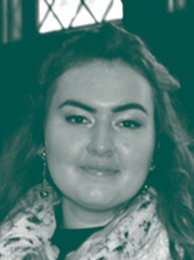 PROJECT
PROJECTStudies on the Ecophysiology of Tropical Corals
ORGANIZATION / LOCATIONBermuda Institute of Ocean Sciences (BIOS), Bermuda
MENTOR(S)Samantha de Putron, Associate Scientist, Bermuda Institute of Ocean Sciences
I interned at BIOS for two summers, 12 weeks each time. For summer 2017, I worked more independently on a project that focused on the physiological changes corals undergo after repeat exposures to thermal stress. I looked at rapid-acclimatization systems in corals, and whether the underlying mechanisms were epigenetic and what this meant for the future of the species. I chose the methods and collected all data. Most of my time was spent doing fieldwork, including diving to conduct fish surveys and to collect coral, conducting transects, filming underwater, water sampling, and maintaining coral tanks. I presented my research three times to BIOS staff members and interns, which tested my ability to deliver information. I explored Bermuda and learned about local culture. Working at BIOS was challenging — I had never done the work I did there. I came away with an enormous amount of knowledge and an exciting new passion. I will always be grateful for this experience.
* This internship is connected to the PEI Water and the Environment Grand Challenges project, “Coral Nitrogen Isotopes as a Recorder of Natural and Human-Driven Changes in the Nutrient Conditions of Oceanic Surface Waters.”
-
Van Baalen, Kelly ’19
Molecular Biology
 PROJECT
PROJECTInvestigating Alternative Nitrogen Fixation
ORGANIZATION / LOCATIONDepartment of Geosciences, Princeton University
MENTOR(S)Xinning Zhang, Assistant Professor of Geosciences and the Princeton Environmental Institute; François Morel, Albert G. Blanke, Jr., Professor of Geosciences and the Princeton Environmental Institute
SEE PRESENTATIONI conducted research on alternative nitrogenases, which are enzymes responsible for converting atmospheric nitrogen into a form that organisms can use. Since nitrogen is essential for life, accurate measurements of the amount of nitrogen entering an ecosystem are critical to understanding the workings of that system. Canonical and alternative nitrogenases fix nitrogen at differing efficiencies. When there is a significant amount of alternative nitrogenase present in a system, knowing the proportion of alternative nitrogenase is essential to making accurate measurements of its nitrogen-fixing capacity. I worked to develop a new costeffective and precise method to determine this proportion. While working to build this method, I learned how to culture soil bacteria, perform assays to determine the rate of nitrogen fixation, use a gas chromatograph, and analyze experimental data. I was able to get an idea of what graduate research might be like and what kind of research I am interested in, while providing useful information to my lab.
* This internship is connected to the PEI Climate and Energy Grand Challenges project, “Controls on Alternative N2 Fixation: Consequences for Land Sequestration of Anthropogenic CO2 and Bio-hydrogen Production.”
-
Woolford, Katherine ’19
Ecology and Evolutionary Biology
 PROJECT
PROJECTCORAL: COral Reef Airborne Laboratory
ORGANIZATION / LOCATIONBermuda Institute of Ocean Sciences, Bermuda
MENTOR(S)ric Hochberg, Associate Scientist, Bermuda Institute of Ocean Sciences
SEE PRESENTATIONI worked as a research intern in the COral Reef Airborne Laboratory (CORAL) at the Bermuda Institute of Ocean Sciences. CORAL is a three-year NASA Earth Venture Suborbital field campaign that used advanced airborne and in-water instruments to survey a representative portion of the world’s coral reefs. On the ground in Bermuda, I managed flume mesocosms to measure photosynthetically available radiation, temperature, oxygen, water flow, pH and spectral signatures of reef benthic organisms and substrates. The reflectance spectra can be linked empirically to light-use efficiency, allowing us to better understand the reef’s health in relation to the environment, including physical, chemical and human factors. In the near future, this will allow remote spectral sensing to measure the long-term condition of these threatened ecosystems. Over the course of the summer, I learned that the scientific method is not a simple one: questions and complications constantly arose, requiring philosophical and physical troubleshooting from start to finish. Thankfully, this experience will prepare me for my thesis research and hopefully graduate school, as it taught me technical lab skills such as data management and meticulous record-keeping, as well as patience and perseverance.
-
Xiao, Katherine ’20
Computer Science
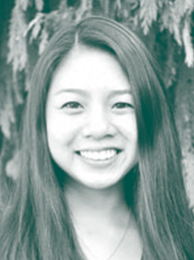 PROJECT
PROJECTVariability in Oxygen Minimum Zones
ORGANIZATION / LOCATIONDepartment of Geosciences, Princeton University
MENTOR(S)Laure Resplandy, Assistant Professor of Geosciences and the Princeton Environmental Institute
SEE PRESENTATIONMy internship focused on the variability of oxygen in the ocean. Over the past few decades, the changing volume of Oxygen Minimum Zones (OMZs) in the ocean has been highly debated, and our goal was to determine whether these changes in OMZs were due to climate change or natural variability in the ocean. I used MATLAB to conduct time-series data analyses on CM2.6 — a high-resolution coupled climate model — that allowed me to better understand OMZ trends, specifically those in the Indian Ocean. Through this experience, I strengthened my ability to analyze large data files, collaborated with my coworkers and adviser, and presented my findings in a research paper and presentation. This internship demonstrated to me that the applications of computer science are endless and can be applied to almost any field. I’m so excited to continue working in team settings to tackle problems we face in the world.
-
Zhou, Elaine ’20
Ecology and Evolutionary Biology
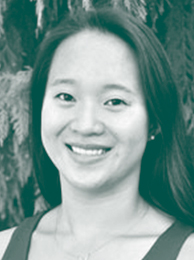 PROJECT
PROJECTNitrogen Acquisition by Marine Phytoplankton
ORGANIZATION / LOCATIONPrinceton Environmental Institute, Princeton University
MENTOR(S)Bess Ward, William J. Sinclair Professor of Geosciences and the Princeton Environmental Institute
The overall goal of this project was to analyze the genes of marine phytoplankton in order to examine how these organisms utilize nitrogen. Understanding the pathways in which marine phytoplankton transform nitrogen is important because oxygen-deficient zones in the ocean are major contributors of the greenhouse gas nitrous oxide to the atmosphere. Two genes were looked at, rbcL and NR. The rbcL gene is important in coding rubisco, which is a carbon dioxide-fixing enzyme, and the NR gene is responsible for coding nitrate reductase. The primary activity I engaged in was amplifying the DNA sequences for the rbcL and NR genes by polymerase chain reaction (PCR). I helped determine the ideal PCR conditions in which each gene could be amplified, and I gathered gene sequences in order to perform sequence analyses. Through this internship, I gained experience working in a wet lab and insight into what a researcher or scientist’s daily life would be like. I also was able to develop more confidence in my lab skills. This internship influenced my future academic study by allowing me to realize that I am interested in concentrating in science.
* This internship is connected to the PEI Water and the Environment Grand Challenges project, “Control of Microbial Nitrous Oxide Production in Coastal Waters.”
- Resilient Cities
-
Ash, Elijah ’19
Geosciences
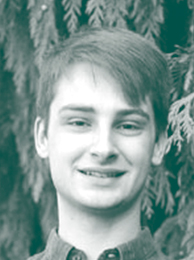 PROJECT
PROJECTGeophysical Studies of Princeton and Beyond
ORGANIZATION / LOCATIONDepartment of Geosciences, Princeton University
MENTOR(S)Jessica Irving, Assistant Professor of Geosciences
SEE PRESENTATIONI worked with several geophysicists to study the seismic properties of Princeton. My adviser, Jessica Irving, uses seismometers to study the properties of the Earth’s core and mantle. Now that Princeton has a seismometer on campus, we can conduct studies that are closer to home. I used a variety of statistical methods to understand Princeton’s seismic noise, which is the ground motion not caused by earthquakes. I demonstrated that seismic noise has a diurnal cycle due to human activity, an annual cycle due to the tides, and that it correlates with high wind speed. This was my first research experience and an incredible learning opportunity. I became familiar with many of the computational tools geophysicists use. I also learned a lot about the mathematical and physical theories used to describe the interactions of the earth, the ocean and the atmosphere. Finally, I learned about the research process, and how to effectively interpret and present data. I am excited to apply geophysical methods to understanding the human environment for my undergraduate research and in my scientific career.
* This internship is connected to the PEI Urban Grand Challenges project, “Guyot Physics: Princeton University as an Urban Science Node.”
-
Chen, Nick ’20
Mechanical and Aerospace Engineering
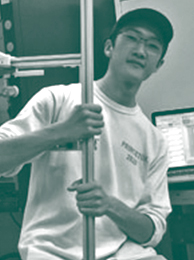 PROJECT
PROJECTWind-Driven Oscillations of Signs and Billboards
ORGANIZATION / LOCATIONPrinceton Gas Dynamics and Fluid Dynamics Lab, Princeton University
MENTOR(S)Alexander Smits, Eugene Higgins Professor of Mechanical and Aerospace Engineering
SEE PRESENTATIONThe goal of my project was to characterize the torques and forces exerted on a plate oscillating due to vortex-induced vibration (VIV), a phenomenon that can cause structures such as road signs and billboards to shake violently in heavy winds. While VIV has obvious destructive potential, my work focused on converting these naturally occurring oscillations into an alternative energy source. My primary task was to design a device analogous to a road sign that could undergo torsional oscillation due to VIV in the lab’s water channel and/ or wind tunnel. Through my attempts to design a working test device, I ultimately contributed data and analysis showing that the experiment was unfortunately not feasible in the lab’s facilities, and came up with possible progress steps and changes to the device that may allow the experiment to be completed in the future. Working on this project exposed me to several applications of fluid dynamics and mechanical engineering, and introduced me to graduate and professional-level studies in engineering research.
-
DeGiulio, Zachariah ’18
Civil and Environmental Engineering
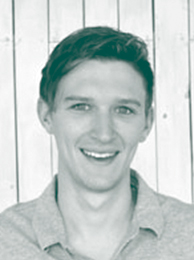 PROJECT
PROJECTHousing and Home Design in Kigali
ORGANIZATION / LOCATIONMASS Design Group, Rwanda
MENTOR(S)Christian Benimana, Rwanda Programs Director, MASS Design Group
SEE PRESENTATIONI worked at MASS Design Group in Kigali, Rwanda. I worked on multiple projects in a collaborative setting. My main project comprised of designing the rural house of the future, for which I studied rural home-construction practices in Rwanda and provided construction drawings and renderings for our client. I also performed research on the efficacy of implementing cooperative housing projects within the city of Kigali in order to mitigate the urban sprawl the city currently experiences.
-
Endale, Hanna ’19
Civil and Environmental Engineering
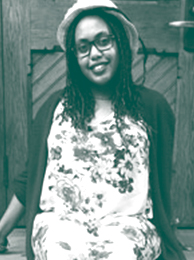 PROJECT
PROJECTPrinceton University Resilient-Cities Lab
ORGANIZATION / LOCATIONPrinceton University Resilient-City Lab, Seattle
MENTOR(S)Maria Garlock, Professor of Civil and Environmental Engineering
SEE PRESENTATIONNatural and man-made disasters can have catastrophic impacts on densly populated cities. Making our cities prepared for and resilient to emergencies requires multi-hazard analyses, interdisciplinary communication, and cooperation between academia and policymakers. I worked in the microfilm archives at the Seattle Department of Construction and Inspections collecting structural notes on buildings in Downtown Seattle. The structural notes contain information such as the structural system, design-code level and design-load level that can be used to generate fragility curves for buildings and understand how they might behave during an earthquake. My partner and I also collected structural plans of new high rises for the University of Washington’s M9 Project. On the policy side, we met with the Seattle Fire Department to talk about the type of information that would be useful in their work, and we attended a disaster-management committee meeting at the Seattle Office of Emergency Management to see some of the emergency-response plans in place.
* This internship is connected to the PEI Urban Grand Challenges project, “Princeton University Resilient-City Lab.”
-
Ho Park, June ’20
Operations Research and Financial Engineering
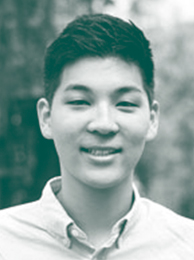 PROJECT
PROJECTHeat-Exchange Elements in a Model Urban Landscape
ORGANIZATION / LOCATIONDepartment of Mechanical and Aerospace Engineering, Princeton University
MENTOR(S)Alexander Smits, Eugene Higgins Professor of Mechanical and Aerospace Engineering
SEE PRESENTATIONI performed research on the concept of heat exchange within turbulent boundary layers in urban environments. We hoped to gain through this research more insight into the extent that urban regions increase wind temperatures by creating and studying a pseudoatmospheric boundary layer in a model scale. My primary role was to collect sensitive airtemperature data by using the wind tunnel in the Fluids Lab, as well as reposition and manage the equipment necessary for data collection. Towards the end of the program, I also made a program in R to visualize and analyze the data to see if the data were reliable. In addition to the technical skills, I’ve also learned that research doesn’t yield expected results every time, so you have to adapt from failure and apply them in the future. Although the results of this research may not apply to me directly in my major or career, the skills I’ve learned in problem-solving and communication will go a long way.
-
Jiang, Felicia ’18
Civil and Environmental Engineering
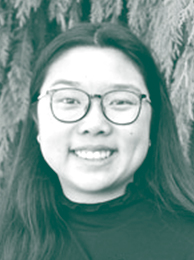 PROJECT
PROJECTDesign Research, Collaboration and Education for Regional Planning and Resilience
ORGANIZATION / LOCATIONLTL Architects, New York City
MENTOR(S)Paul Lewis and Guy Nordenson, Professors of Architecture
SEE PRESENTATIONI worked on the exhibition, “Four Corridors: Foreseeing the Region of the Future,” an initiative of the Regional Plan Association that brought together architects, designers and planners to visually demonstrate how policy changes, new investments and changing populationgrowth patterns could transform different areas of the New York metropolitan region over the next 25 years. My role was in the design of the exhibition, from the physical construction of walls and laying out images and text, to creating graphics and maps for display. I used 2-D tools such as Adobe Photoshop, Illustrator, and InDesign, and 3-D tools such as AutoCad and Rhino. As part of the exhibition, I built several models by hand and using the laser cutter. Through the internship, I gained firsthand experience in exhibition design and in working as part of a larger team of architects. I was exposed to the types of projects architects work on and the challenges they may be faced with. I now have a more knowledgeable perspective on the architecture industry, which will help me make important decisions about my future and career path.
* This internship is connected to the PEI Urban Grand Challenges project, “Urban Adaptation to Climate Change.”
-
Khan, Noshin ’19
Architecture
 PROJECT
PROJECTDesign Research, Collaboration and Education for Regional Planning and Resilience
ORGANIZATION / LOCATIONLTL Architects, New York City
MENTOR(S)Paul Lewis and Guy Nordenson, Professors of Architecture
SEE PRESENTATIONI helped fabricate and design an exhibition for the Regional Plan Association (RPA) in preparation for the unveiling of their fourth regional plan for the New York City area. The exhibition featured four finalists from a design competition that challenged architecture firms to incorporate resiliency and urban planning into their plans. My intern team worked on every step of the installation, from design and fabrication, to monitoring the exhibition and interacting with visitors. Our responsibilities included community outreach and designing a parallel kids’ exhibition. A month before the public exhibition opened at Fort Tilden in the Rockaways, we installed a private exhibition at New York University to advertise the installation and foster conversations with the architect and guest urban-planning speakers. This internship gave me a sense of the large scale architects can work at, what it means to be an architect, and how interdisciplinary the field can be. I was torn between medicine and architecture as possible careers, but I now feel confident in my decision to become an architect.
* This internship is connected to the PEI Urban Grand Challenges project, “Urban Adaptation to Climate Change.”
-
Laufer, Benjamin ’19
Operations Research and Financial Engineering
 PROJECT
PROJECTUsing Machine Learning to Ensure Clean Air Act Compliance: Optimizing EPA’s Inspection Strategy
ORGANIZATION / LOCATIONU.S. Environmental Protection Agency, New York
MENTOR(S)Daniel Teitelbaum, Environmental Policy and Data Analyst, EPA
SEE PRESENTATIONI worked with the EPA’s data-management team on using statistics and machine-learning methods to help the air-compliance branch with inspection targets. Currently, EPA inspectors use personal discretion in deciding which facilities to check for illegal air pollution-emission practices. Using an array of historical EPA compliance data, I aimed to devise a data-driven, optimal strategy for Clean Air Act inspections. With R programming, I implemented a Random Forest Machine Learning algorithm to classify suspect facilities nationwide. I hope my work will help the EPA identify and regulate sites that pose significant environmental risk to American citizens. My summer internship experience taught me a lot about American environmental regulations, and helped me hone my data-analytics and programming skills. Back at Princeton, I am continuing coursework related to mathematical modeling, big data and environmental policy. Additionally, I am continuing this project under the guidance of Robert Vanderbei, Professor of Operations Research and Financial Engineering.
-
Lin, Amber ’19
Civil and Environmental Engineering
 PROJECT
PROJECTDesign Research, Collaboration and Education for Regional Planning and Resilience
ORGANIZATION / LOCATIONLTL Architects, New York City
MENTOR(S)Paul Lewis and Guy Nordenson, Professors of Architecture
SEE PRESENTATIONI helped create, design and construct a series of public exhibitions for the Regional Plan Association’s (RPA) fourth regional plan for the New York City metropolitan area. The RPA plan presents winning designs that address how social and environmental changes could affect the regional population. I primarily worked on the main exhibition at Rockaway Beach. I helped construct a board on which visitors could indicate what the four different segments of the metropolitan area meant to them. I also helped build a set of Lego tables intended to engage younger visitors. I gained skills in Adobe Suite software, model building, wood construction and finishing, and more. I experienced the ins and outs of working at an architecture firm and I learned the value of strong communication between the architect and the client. This internship showed me that architecture can be key to environmental communication. It was a valuable opportunity to evaluate my career choices.
* This internship is connected to the PEI Urban Grand Challenges project, “Urban Adaptation to Climate Change.”
-
Maldonado, Matthew ’18
Architecture
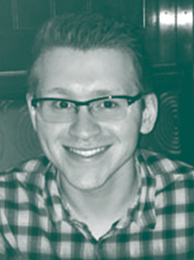 PROJECT
PROJECTDesign Research, Collaboration and Education for Regional Planning and Resilience
ORGANIZATION / LOCATIONLTL Architects, New York City
MENTOR(S)Paul Lewis and Guy Nordenson, Professors of Architecture
SEE PRESENTATIONThrough an internship at LTL Architects, I assisted the Regional Plan Association (RPA) in the design and construction of an exhibition for their fourth regional plan. The regional plan is a collection of proposals and suggestions for the current and future planning of the New York-New Jersey-Connecticut metropolitan region. Contributing to the plan’s fourth iteration was an amazing experience. The plan deals with issues including regional prosperity, sustainability, resiliency and transportation. The goal is to propose a long-range vision for the future growth and development of the region, while also accounting for its present condition. The other interns and I designed an exhibition space that was both programmatically functional and aesthetically compelling. The experience I gained from working at a professional architecture firm has reinforced my decision to pursue architecture as a major and a career, and the teamwork, problem-solving and design skills I learned will prove invaluable in the future.
* This internship is connected to the PEI Urban Grand Challenges project, “Urban Adaptation to Climate Change.”
-
Pomeroy, Stuart ’18
Woodrow Wilson School
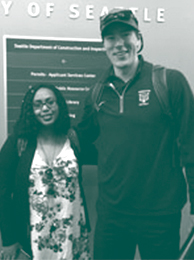 PROJECT
PROJECTPrinceton University Resilient-Cities Lab
ORGANIZATION / LOCATIONPrinceton University Resilient-City Lab, Seattle
MENTOR(S)Maria Garlock, Professor of Civil and Environmental Engineering
SEE PRESENTATIONCities are especially vulnerable to disasters caused by climate change and other natural catastrophes. We want them to be able to prepare for, respond to and recover from significant multi-hazard threats with minimal damage to public safety, health, economy and security. For my internship, I collected and analyzed data for a community-level evaluation framework for building performance in Seattle following an earthquake. We collaborated with a variety of stakeholders in academia, city offices, and law enforcement and public safety. We collected data on the engineering aspects of buildings and on planned response procedures for extreme events. Building data included structural systems, design code, design loads and criteria, and notes on seismic design and systems. In conducting this research, I developed my data-management and analysis skills, led meetings with experienced professionals and officials in the field, and gained perspective on the importance of studying climate change impacts on urban infrastructures.
* This internship is connected to the PEI Urban Grand Challenges project, “Princeton University Resilient-City Lab.”
-
Tralie, James ’19
Geosciences
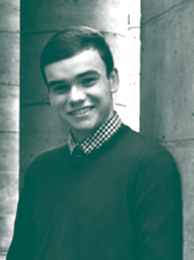 PROJECT
PROJECTGPS Meteorology at Princeton University: A Case Study
ORGANIZATION / LOCATIONDepartment of Geosciences, Princeton University
MENTOR(S)Jessica Irving, Assistant Professor of Geosciences
SEE PRESENTATIONI studied the integration of GPS-receiver data with collocated weather-station data to measure the integrated water vapor (IWV) concentration in the atmosphere above Princeton, New Jersey. Through this study, we generate crucial atmospheric data concerning water vapor that will aid with the analysis of hurricane systems, greenhouse gas concentrations, and ultimately the climate of the Princeton area. Through my research, I gained skills in MATLAB and Linux that will help me immensely as I continue in the geosciences. Working with raw GPS and weather data afforded me the incredible opportunity to truly understand the generation and subsequent transfer of a GPS signal to a ground-based receiver. Then, using MATLAB scripts I wrote, I implemented the translating and unpacking of the GPS data into readable and understandable information. In addition, I discovered the geometry necessary to translate the received GPS signals into latitudinal, longitudinal and altitudinal coordinates of the ground-based receiver. I will continue to use the skills I developed during this internship as I begin new climate-modeling projects.
* This internship is connected to the PEI Urban Grand Challenges project, “Guyot Physics: Princeton University as an Urban Science Node.”
-
Vielma, Angélica ’18
Art and Archaeology
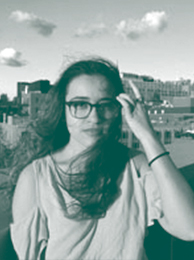 PROJECT
PROJECTThe Batture Ritual: An Intimate Look at the Macro- and Micro-Economies of the Mississippi River
ORGANIZATION / LOCATIONospect New Orleans, New Orleans
MENTOR(S)Jeffrey Whetstone, Professor of Visual Arts in the Lewis Center for the Arts
My project started with a tree. I spent my summer in New Orleans working as a production assistant and research intern on a documentary about climate change, human activity and the fragile economy of the Lower Mississippi River. Situated on a batture — the land between a low-stage river and a levee — the tree was a daily stop for me and my adviser, Jeffrey Whetstone, who is making the documentary as part of his PEI Urban Grand Challenges project, “Flow: Living with the Mississippi.” One of the biggest things about the Mississippi River and New Orleans is how affected they are by climate change. With permission from the Port of New Orleans, we worked every day from 9 p.m. to 3 a.m., or 3 a.m. to noon, filming the people, places and commerce on and along the river. My summer was not what I expected it to be. I was pleasantly surprised by my experiences and the creative opportunity to transfer those into art. I also got to think about how scientific data can be transformed into art. I believe that the intersection where art and science meet is where information flourishes.
* This internship is connected to the PEI Urban Grand Challenges project, “Flow: Living with the Mississippi.”
-
Von Berg, Lauren ’20
Geosciences
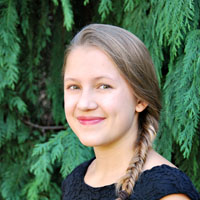 PROJECT
PROJECTGeophysical Studies of Princeton and Beyond
ORGANIZATION / LOCATIONGuyotPhysics, Princeton University
MENTOR(S)Jessica Irving, Assistant Professor of Geosciences
SEE PRESENTATIONI worked with the GuyotPhysics research group in Princeton looking at seismic data from the seismometer installed in the basement of Guyot Hall. The seismometer was installed only two years ago, so I completed some of the first research using its data. I explored the sensitivity of the seismometer to earthquake signals. To do so, I created algorithms using MATLAB to quantify the quality of data for a given earthquake. Only if an earthquake was of high enough quality would I use it for the rest of my analysis. After finding the “good” earthquakes, I determined the relationship between the quality of seismic data and an earthquake’s distance and magnitude. I found that the seismometer records increasingly smaller earthquakes the closer the earthquake is to Princeton, and increasingly further earthquakes the larger the earthquake’s magnitude. This internship was interesting and valuable to me as I learned a lot about geosciences, programming and the research process in general. It also affirmed my desire to major in geosciences.
* This internship is connected to the PEI Urban Grand Challenges project, “Guyot Physics: Princeton University as an Urban Science Node.”
- Water and Health
-
Baskaran, Mrudhula ’19
Mechanical and Aerospace Engineering
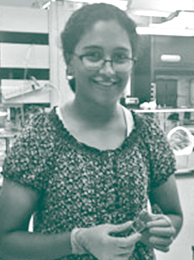 PROJECT
PROJECTExperimental Studies of Diffusiophoresis with Environmental Applications
ORGANIZATION / LOCATIONComplex Fluids Group, Princeton University
MENTOR(S)Howard Stone, Donald R. Dixon ’69 and Elizabeth W. Dixon Professor of Mechanical and Aerospace Engineering
SEE PRESENTATIONI studied diffusiophoresis, which is the motion of charged particles in aqueous solutions due to gradients in solute concentration. I tracked the diffusiophoretic motion of polystyrene (PS) particles and amine-modified PS (aPS) particles in response to externally imposed gradients in a sodium-chloride concentration. I prepared small-height Hele-Shaw chambers using polydimethylsiloxane (PDMS), experimenting with and optimizing different chamber geometries. I performed fluorescent microscopy and analyzed particle motion using the image-tracking software ImageJ. My contributions to this project included optimizing the experimental setup and learning how different gradients of sodium-chloride concentration can affect particle motion. Through this experience, I learned experimentation skills and how to formulate general trends in data. This internship gave me the opportunity to frame and systematically answer research questions to test a hypothesis. Diffusiophoresis is a concept I enjoyed learning about, and I will continue my research with the Stone Group for my junior independent work.
* This internship is connected to the PEI Water and the Environment Grand Challenges project, “Diffusiophoresis of Control of Particles in Water Systems.”
-
Bechtold, Alexander ’20
Undeclared


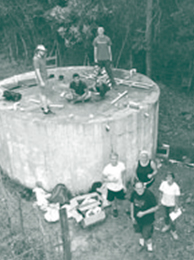 PROJECT
PROJECTCommunity Water Project — Dominican Republic
ORGANIZATION / LOCATIONEngineers Without Borders, Princeton Chapter, Dominican Republic
MENTOR(S)Peter Jaffe, William L. Knapp ’47 Professor of Civil Engineering and Professor of Civil and Environmental Engineering
SEE PRESENTATIONPrinceton’s Engineers Without Borders Chapter in the Dominican Republic partnered with El Cajuil, a rural community of roughly 130 households, to improve their water supply. An assessment trip in summer 2016 determined that distribution inefficiencies were a major problem leading to inconsistent water delivery. In summer 2017, PEI interns returned to El Cajuil to improve the supply of water. A float-valve assembly was installed at the inlet to the primary storage tank to prevent water from overflowing during periods of plentiful water and allow it to collect in the reservoir instead. Water meters were installed to provide the team and the community with a more comprehensive idea of water usage. These readings helped us identify an unknown connection between our community’s water system and the system of a neighboring town. By separating them, we prevented valuable water from bypassing the houses in El Cajuil. Finally, the foundations of a disinfection system were put in. These implementations will improve the quality of the water that community members receive and set the foundation for future projects to ensure water scarcity will no longer be an issue.
-
Bisogno, Sofia ’20
Civil and Environmental Engineering





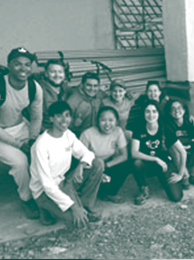 PROJECT
PROJECTPotable Water System — Pusunchás, Peru
ORGANIZATION / LOCATIONEngineers Without Borders, Princeton Chapter, Peru
MENTOR(S)Peter Jaffe, William L. Knapp ’47 Professor of Civil Engineering and Professor of Civil and Environmental Engineering
SEE PRESENTATIONWe traveled to Peru to construct a sustainable, gravity-fed water system for the community of Pusunchás, Peru. Our team began working with this community last summer to install a 20 kilometer-long pipeline. The goal of the summer 2017 trip was to use the design and calculations we completed during the 2016-2017 academic year to begin building the first phase of the water system. Located in the Peruvian Andes, Pusunchás has not had a functioning water system for 25 years. The village contains 120 families who travel long distances to obtain water for personal use. Through this project, we hope to provide the community members a clean source of potable water and to improve their living standards. As students who are passionate about international development, we have been able to combine that passion with our engineering knowledge to directly help others. We hope that our team’s dedication will yield meaningful results and positively influence the way the community lives, and we look forward to Engineers Without Borders’ collaboration with Pusunchás to work towards these results.
-
Brizo, Ailyn ’18
Civil and Environmental Engineering





 PROJECT
PROJECTCommunity Water Project — Dominican Republic
ORGANIZATION / LOCATIONEngineers Without Borders, Princeton Chapter, Dominican Republic
MENTOR(S)Peter Jaffe, William L. Knapp ’47 Professor of Civil Engineering and Professor of Civil and Environmental Engineering
SEE PRESENTATIONPrinceton’s Engineers Without Borders Chapter in the Dominican Republic partnered with El Cajuil, a rural community of roughly 130 households, to improve their water supply. An assessment trip in summer 2016 determined that distribution inefficiencies were a major problem leading to inconsistent water delivery. In summer 2017, PEI interns returned to El Cajuil to improve the supply of water. A float-valve assembly was installed at the inlet to the primary storage tank to prevent water from overflowing during periods of plentiful water and allow it to collect in the reservoir instead. Water meters were installed to provide the team and the community with a more comprehensive idea of water usage. These readings helped us identify an unknown connection between our community’s water system and the system of a neighboring town. By separating them, we prevented valuable water from bypassing the houses in El Cajuil. Finally, the foundations of a disinfection system were put in. These implementations will improve the quality of the water that community members receive and set the foundation for future projects to ensure water scarcity will no longer be an issue.
-
Byrnes, Alexander ’18
Chemical and Biological Engineering
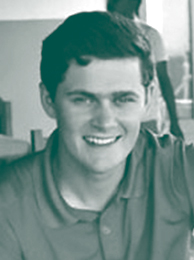 PROJECT
PROJECTEnvironmental Impact of Natural Gas Pipelines on Water Quality
ORGANIZATION / LOCATIONDepartment of Geosciences, Princeton University
MENTOR(S)Tullis Onstott, Professor of Geosciences
SEE PRESENTATIONI investigated the effects of natural gas pipelines on drinking water contamination. The hypothesis supposed that because arsenic is released from geologic formations by microbial activity, and pipelines provide an ideal environment for bacterial growth, there would be a direct correlation between distance to the pipeline and arsenic concentration in the water. To test this hypothesis, well water from 18 households in Ringoes, New Jersey, was sampled. This water was then tested — both in the field and in a laboratory — for various chemical components, including arsenic. Water composition was then analyzed to find any potential correlations. I gained a lot of experience with water sampling and testing from this internship, and I am now comfortable with many new laboratory machines and practices. I also am better at data analysis and technical writing. This project helped me confirm that environmental research and protection, especially in relation to water, is a field that I want to continue exploring both in my remaining year at Princeton and in my future career.
-
Callegari, Nicholas ’20
Undeclared


 PROJECT
PROJECTCommunity Water Project — Dominican Republic
ORGANIZATION / LOCATIONEngineers Without Borders, Princeton Chapter, Dominican Republic
MENTOR(S)Peter Jaffe, William L. Knapp ’47 Professor of Civil Engineering and Professor of Civil and Environmental Engineering
SEE PRESENTATIONPrinceton’s Engineers Without Borders Chapter in the Dominican Republic partnered with El Cajuil, a rural community of roughly 130 households, to improve their water supply. An assessment trip in summer 2016 determined that distribution inefficiencies were a major problem leading to inconsistent water delivery. In summer 2017, PEI interns returned to El Cajuil to improve the supply of water. A float-valve assembly was installed at the inlet to the primary storage tank to prevent water from overflowing during periods of plentiful water and allow it to collect in the reservoir instead. Water meters were installed to provide the team and the community with a more comprehensive idea of water usage. These readings helped us identify an unknown connection between our community’s water system and the system of a neighboring town. By separating them, we prevented valuable water from bypassing the houses in El Cajuil. Finally, the foundations of a disinfection system were put in. These implementations will improve the quality of the water that community members receive and set the foundation for future projects to ensure water scarcity will no longer be an issue.
-
Crowell, Susannah ’18
Mechanical and Aerospace Engineering





 PROJECT
PROJECTPotable Water System — Pusunchás, Peru
ORGANIZATION / LOCATIONEngineers Without Borders, Princeton Chapter, Peru
MENTOR(S)Peter Jaffe, William L. Knapp ’47 Professor of Civil Engineering and Professor of Civil and Environmental Engineering
SEE PRESENTATIONWe traveled to Peru to construct a sustainable, gravity-fed water system for the community of Pusunchás, Peru. Our team began working with this community last summer to install a 20 kilometer-long pipeline. The goal of the summer 2017 trip was to use the design and calculations we completed during the 2016-2017 academic year to begin building the first phase of the water system. Located in the Peruvian Andes, Pusunchás has not had a functioning water system for 25 years. The village contains 120 families who travel long distances to obtain water for personal use. Through this project, we hope to provide the community members a clean source of potable water and to improve their living standards. As students who are passionate about international development, we have been able to combine that passion with our engineering knowledge to directly help others. We hope that our team’s dedication will yield meaningful results and positively influence the way the community lives, and we look forward to Engineers Without Borders’ collaboration with Pusunchás to work towards these results.
-
Dobies, Kayla ’20
Neuroscience
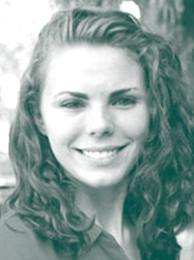 PROJECT
PROJECTPotassium Homeostasis in Eukaryotes: Insights from Potassium Isotopes
ORGANIZATION / LOCATIONHiggins and Zhang Labs, Department of Geosciences, Princeton University
MENTOR(S)John Higgins, Assistant Professor of Geosciences
SEE PRESENTATIONI collected data on the various potassium isotopes concentrated in the cytosol of prokaryotic and eukaryotic cells. The mechanisms that help maintain the osmotic balance-diffusion of water across a membrane in bacterial cells regulated by potassium is largely unknown. By measuring the different isotopes in various organisms, we hoped to gain insight into this phenomenon. While working to uncover isotope data, I had the chance to study in a geosciences and a molecular biology lab. I was involved in all steps of the procedure including media preparation, cell culturing and cell digestion. With experience in a professional lab and working in an environment with graduate students, I am better prepared to take on the rigors that is a senior thesis and other research in the years to come.
-
Heubner, Camille ’20
Civil and Environmental Engineering





 PROJECT
PROJECTPotable Water System — Pusunchás, Peru
ORGANIZATION / LOCATIONEngineers Without Borders, Princeton Chapter, Peru
MENTOR(S)Peter Jaffe, William L. Knapp ’47 Professor of Civil Engineering and Professor of Civil and Environmental Engineering
SEE PRESENTATIONWe traveled to Peru to construct a sustainable, gravity-fed water system for the community of Pusunchás, Peru. Our team began working with this community last summer to install a 20 kilometer-long pipeline. The goal of the summer 2017 trip was to use the design and calculations we completed during the 2016-2017 academic year to begin building the first phase of the water system. Located in the Peruvian Andes, Pusunchás has not had a functioning water system for 25 years. The village contains 120 families who travel long distances to obtain water for personal use. Through this project, we hope to provide the community members a clean source of potable water and to improve their living standards. As students who are passionate about international development, we have been able to combine that passion with our engineering knowledge to directly help others. We hope that our team’s dedication will yield meaningful results and positively influence the way the community lives, and we look forward to Engineers Without Borders’ collaboration with Pusunchás to work towards these results.
-
Johnson, Nicholas ’20
Chemical and Biological Engineering





 PROJECT
PROJECTPotable Water System — Pusunchás, Peru
ORGANIZATION / LOCATIONEngineers Without Borders, Princeton Chapter, Peru
MENTOR(S)eter Jaffe, William L. Knapp ’47 Professor of Civil Engineering and Professor of Civil and Environmental Engineering
SEE PRESENTATIONWe traveled to Peru to construct a sustainable, gravity-fed water system for the community of Pusunchás, Peru. Our team began working with this community last summer to install a 20 kilometer-long pipeline. The goal of the summer 2017 trip was to use the design and calculations we completed during the 2016-2017 academic year to begin building the first phase of the water system. Located in the Peruvian Andes, Pusunchás has not had a functioning water system for 25 years. The village contains 120 families who travel long distances to obtain water for personal use. Through this project, we hope to provide the community members a clean source of potable water and to improve their living standards. As students who are passionate about international development, we have been able to combine that passion with our engineering knowledge to directly help others. We hope that our team’s dedication will yield meaningful results and positively influence the way the community lives, and we look forward to Engineers Without Borders’ collaboration with Pusunchás to work towards these results.
-
Joo Choi, Young ’20
Undeclared
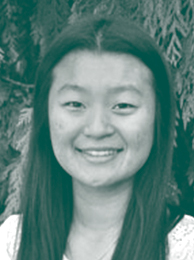 PROJECT
PROJECTLead in the Human Environment: A No-Cost Monitoring Program for Trenton, New Jersey
ORGANIZATION / LOCATIONDepartment of Geosciences, Princeton University; Isles, Inc., Trenton
MENTOR(S)John Higgins, Assistant Professor of Geosciences
SEE PRESENTATIONMy internship focused on determining the presence of lead in the human environment, specifically in Trenton. Lead from paint, pipes and gasoline can cause lifelong impacts on residents, especially infants and children. Collaborating with the nonprofit organization Isles, Inc., I conducted lead surveys of soil, paint, dust and water in households and community gardens. I was engaged in the entire scientific process and learned to use a variety of scientific instruments. I collected samples with an X-ray fluorescent (XRF) spectrometer and analyzed them using an inductively coupled plasma mass spectrometer (ICP-MS). I helped provide Trenton residents with assurance that their homes are safe. This internship challenged me to think creatively about problems and to think more critically about the scientific process and quality assurance. Because of this internship, I intend to pursue a career that intersects chemistry and human health due to its direct and vital influence.
* This internship is connected to the PEI Urban Grand Challenges project, “Urban Tap Water and Human Health.”
-
Kawabe, Hinako ’19
Chemical and Biological Engineering
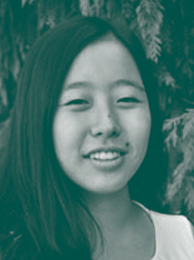 PROJECT
PROJECTLead in the Human Environment: A No-Cost Monitoring Program for Trenton, New Jersey
ORGANIZATION / LOCATIONDepartment of Geosciences, Princeton University; Isles, Inc., Trenton
MENTOR(S)John Higgins, Assistant Professor of Geosciences
SEE PRESENTATIONI worked in the lab of John Higgins in conjunction with the Trenton-based nonprofit organization Isles, Inc. to test houses in Trenton for lead contamination. Lead can have multiple sources, such as lead-based paint that can erode into miniscule particles. Lead ingestion is harmful, especially for children under the age of six. Isles conducts free home lead testing for people who sign up and I assisted Isles in this testing. I used an X-ray fluorescence gun to test the dust, soil and paint in people’s homes, as well as the soil in Trenton’s community gardens. In addition, I worked in the Higgins Lab on water analysis, learning how to prepare and run water samples on the inductively coupled plasma mass spectrometer (ICP-MS), which measures the amount of lead in water. All the data were summarized and sent back to Isles. Being able to provide a safer environment for the residents of Trenton was a wonderful experience. Working with a nonprofit organization showed me an impactful application of science and inspired me to look into these organizations for a future career.
* This internship is connected to the PEI Urban Grand Challenges project, “Urban Tap Water and Human Health.”
-
Li, Jiayang ’19
Computer Science
 PROJECT
PROJECTPotable Water System — Pusunchás, Peru
ORGANIZATION / LOCATIONEngineers Without Borders, Princeton Chapter, Peru
MENTOR(S)Peter Jaffe, William L. Knapp ’47 Professor of Civil Engineering and Professor of Civil and Environmental Engineering
SEE PRESENTATIONWe traveled to Peru to construct a sustainable, gravity-fed water system for the community of Pusunchás, Peru. Our team began working with this community last summer to install a 20 kilometer-long pipeline. The goal of the summer 2017 trip was to use the design and calculations we completed during the 2016-2017 academic year to begin building the first phase of the water system. Located in the Peruvian Andes, Pusunchás has not had a functioning water system for 25 years. The village contains 120 families who travel long distances to obtain water for personal use. Through this project, we hope to provide the community members a clean source of potable water and to improve their living standards. As students who are passionate about international development, we have been able to combine that passion with our engineering knowledge to directly help others. We hope that our team’s dedication will yield meaningful results and positively influence the way the community lives, and we look forward to Engineers Without Borders’ collaboration with Pusunchás to work towards these results.
-
Miller, Samuel ’18
Electrical Engineering


 PROJECT
PROJECTCommunity Water Project — Dominican Republic
ORGANIZATION / LOCATIONEngineers Without Borders, Princeton Chapter, Dominican Republic
MENTOR(S)Peter Jaffe, William L. Knapp ’47 Professor of Civil Engineering and Professor of Civil and Environmental Engineering
SEE PRESENTATIONPrinceton’s Engineers Without Borders Chapter in the Dominican Republic partnered with El Cajuil, a rural community of roughly 130 households, to improve their water supply. An assessment trip in summer 2016 determined that distribution inefficiencies were a major problem leading to inconsistent water delivery. In summer 2017, PEI interns returned to El Cajuil to improve the supply of water. A float-valve assembly was installed at the inlet to the primary storage tank to prevent water from overflowing during periods of plentiful water and allow it to collect in the reservoir instead. Water meters were installed to provide the team and the community with a more comprehensive idea of water usage. These readings helped us identify an unknown connection between our community’s water system and the system of a neighboring town. By separating them, we prevented valuable water from bypassing the houses in El Cajuil. Finally, the foundations of a disinfection system were put in. These implementations will improve the quality of the water that community members receive and set the foundation for future projects to ensure water scarcity will no longer be an issue.
-
Qiu, Eric ’18
Chemical and Biological Engineering
 PROJECT
PROJECTCommunity Water Project — Dominican Republic
ORGANIZATION / LOCATIONEngineers Without Borders, Princeton Chapter, Dominican Republic
MENTOR(S)Peter Jaffe, William L. Knapp ’47 Professor of Civil Engineering and Professor of Civil and Environmental Engineering
SEE PRESENTATIONPrinceton’s Engineers Without Borders Chapter in the Dominican Republic partnered with El Cajuil, a rural community of roughly 130 households, to improve their water supply. An assessment trip in summer 2016 determined that distribution inefficiencies were a major problem leading to inconsistent water delivery. In summer 2017, PEI interns returned to El Cajuil to improve the supply of water. A float-valve assembly was installed at the inlet to the primary storage tank to prevent water from overflowing during periods of plentiful water and allow it to collect in the reservoir instead. Water meters were installed to provide the team and the community with a more comprehensive idea of water usage. These readings helped us identify an unknown connection between our community’s water system and the system of a neighboring town. By separating them, we prevented valuable water from bypassing the houses in El Cajuil. Finally, the foundations of a disinfection system were put in. These implementations will improve the quality of the water that community members receive and set the foundation for future projects to ensure water scarcity will no longer be an issue.
-
Stanley, Elizabeth ’18
Chemical and Biological Engineering
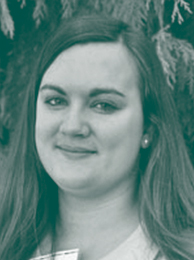 PROJECT
PROJECTLead in the Human Environment: A No-Cost Monitoring Program for Trenton, New Jersey
ORGANIZATION / LOCATIONDepartment of Geosciences, Princeton University; Isles, Inc., Trenton
MENTOR(S)John Higgins, Assistant Professor of Geosciences
SEE PRESENTATIONThis project focused on collecting data on lead in the environment in the Trenton area through the analysis of water, soil and paint in homes and gardens. We partnered with Isles, Inc., a nonprofit organization in Trenton, to go on home visits to test the paint, soil, dust and water for lead as a part of Isles’ free Healthy Homes assessments. We collected water samples from the homes for analysis with inductively coupled plasma mass spectrometry in our laboratory and used a handheld X-ray fluorescence (XRF) analyzer to determine the lead content of the paint, soil and dust in the home. We also visited community gardens run by Isles to test the soil for lead and other elements using the XRF analyzers and we took soil samples back to lab. We generated data plots from the gardens in MATLAB, an experience that greatly improved my ability to code in MATLAB. Beyond providing me with experience in a myriad of laboratory techniques, this interships has given me insight into the publichealth problem posed by lead, which I was relatively unaware of, and it has reaffirmed my desire to incorporate service to my community into my career.
* This internship is connected to the PEI Urban Grand Challenges project, “Urban Tap Water and Human Health.”
-
Walsh, Keeley ’19
Geosciences
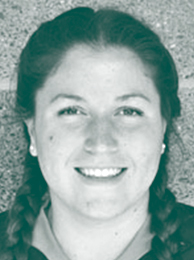 PROJECT
PROJECTEnvironmental Impact of Natural Gas Pipelines on Water Quality
ORGANIZATION / LOCATIONDepartment of Geosciences, Princeton University
MENTOR(S)Tullis Onstott, Professor of Geosciences
SEE PRESENTATIONI conducted research on the impact of natural gas pipelines on water quality in Hunterdon County, New Jersey. I worked alongside Tullis Onstott and another intern as we travelled to several different wells to collect water samples for lab and field analysis. We tested for arsenic, sulfide, ammonia and dissolved-oxygen concentrations on site. Our main concern was if pipelines cause an increase of arsenic in homeowners’ drinking water. I was mostly responsible for analyzing the water samples for their dissolved-gas concentrations in the lab using gas chromatography. We compiled all our data from the lab and field to determine if there were any correlations between arsenic concentration and dissolved gases, well depth, or the distance of the well to the pipeline. The results of our work were sent to the homeowners and the Raritan Headwaters Association for their records. Through this internship I have learned to use several different techniques to analyze water composition, to conduct research that directly impacts a local community, and to write reports that explain our findings to the general public. I plan to continue this research for my junior independent project because I believe that we can yield more conclusive results by increasing our sample size.
-
Watt, Lydia ’18
Civil and Environmental Engineering





 PROJECT
PROJECTPotable Water System — Pusunchás, Peru
ORGANIZATION / LOCATIONEngineers Without Borders, Princeton Chapter, Peru
MENTOR(S)Peter Jaffe, William L. Knapp ’47 Professor of Civil Engineering and Professor of Civil and Environmental Engineering
SEE PRESENTATIONWe traveled to Peru to construct a sustainable, gravity-fed water system for the community of Pusunchás, Peru. Our team began working with this community last summer to install a 20 kilometer-long pipeline. The goal of the summer 2017 trip was to use the design and calculations we completed during the 2016-2017 academic year to begin building the first phase of the water system. Located in the Peruvian Andes, Pusunchás has not had a functioning water system for 25 years. The village contains 120 families who travel long distances to obtain water for personal use. Through this project, we hope to provide the community members a clean source of potable water and to improve their living standards. As students who are passionate about international development, we have been able to combine that passion with our engineering knowledge to directly help others. We hope that our team’s dedication will yield meaningful results and positively influence the way the community lives, and we look forward to Engineers Without Borders’ collaboration with Pusunchás to work towards these results.



